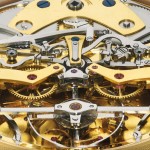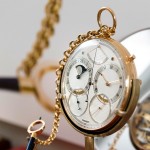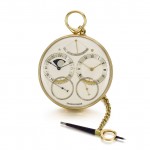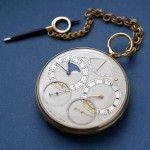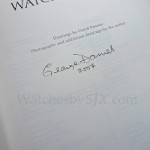A Detailed Look the George Daniels Space Traveller I
The mythical watch reappears.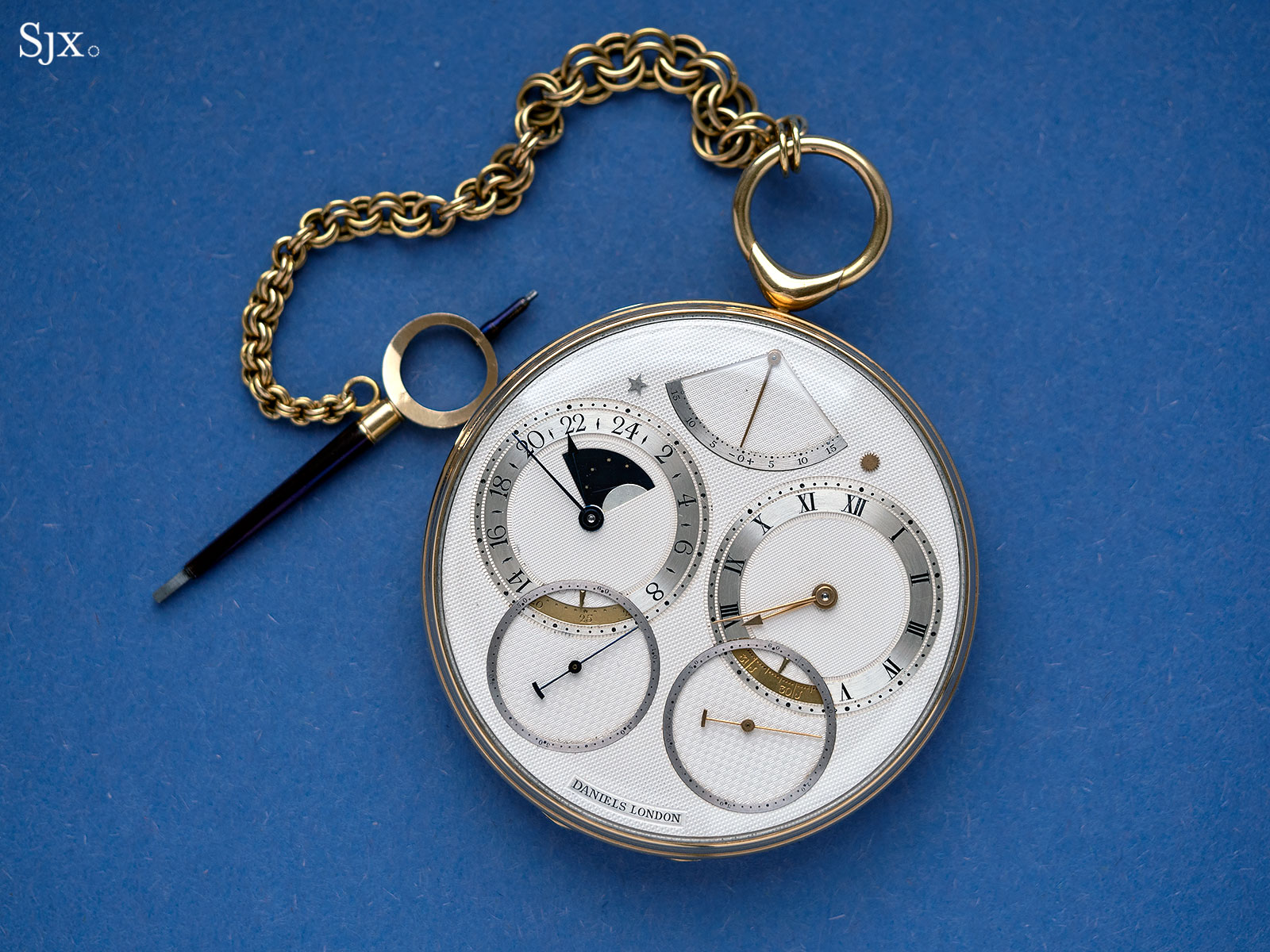
The Space Traveller II is the most famous George Daniels pocket watch, having set the record for a Daniels timepiece when it sold for the equivalent of US$4.32m two years ago.
Not only is it an exceptionally valuable watch, the Space Traveller II is mechanically intriguing, being driven by an independent double-wheel escapement. That in turn allows for twin time displays, of both mean solar time, which is the conventional, 24-hour day, and sidereal time, measuring using Earth’s rotation relative to fixed stars.
The second Space Traveller was a watch Daniels kept until the end of his life, along with the recently sold Grand Complication.
The first Space Traveller, on the other hand, disappeared from public view after it was sold in 1988. When asked about the watch recently, Daniels’ protege Roger W. Smith responded that he has never encountered the original Space Traveller – until now.
When Daniels finished the first Space Traveller in 1982, it was sold by English antiquarian watch dealer Bobinet. The buyer subsequently sold the watch at Sotheby’s in Geneva on November 17, 1988, for 220,000 Swiss francs.
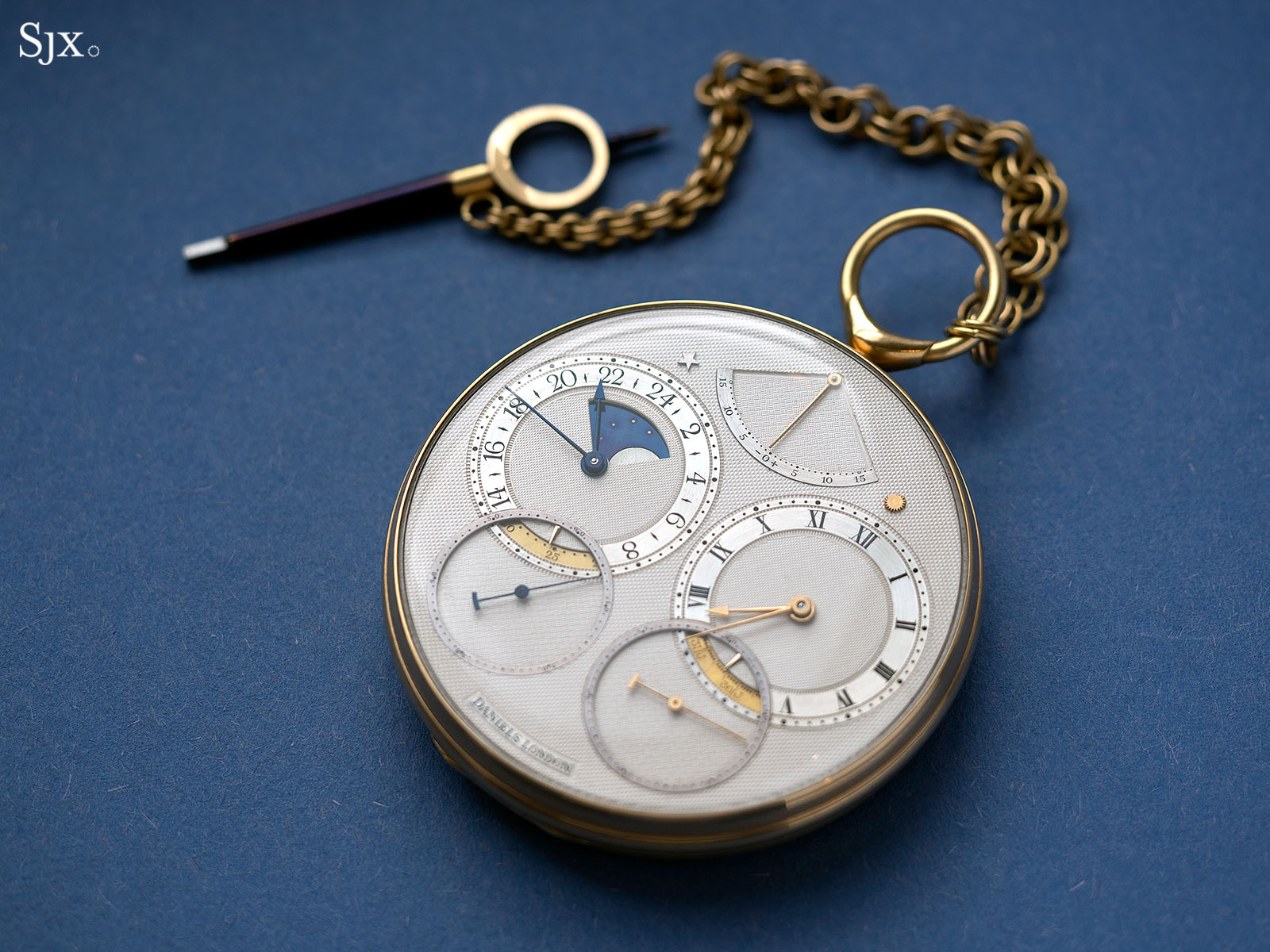
The Space Traveller I
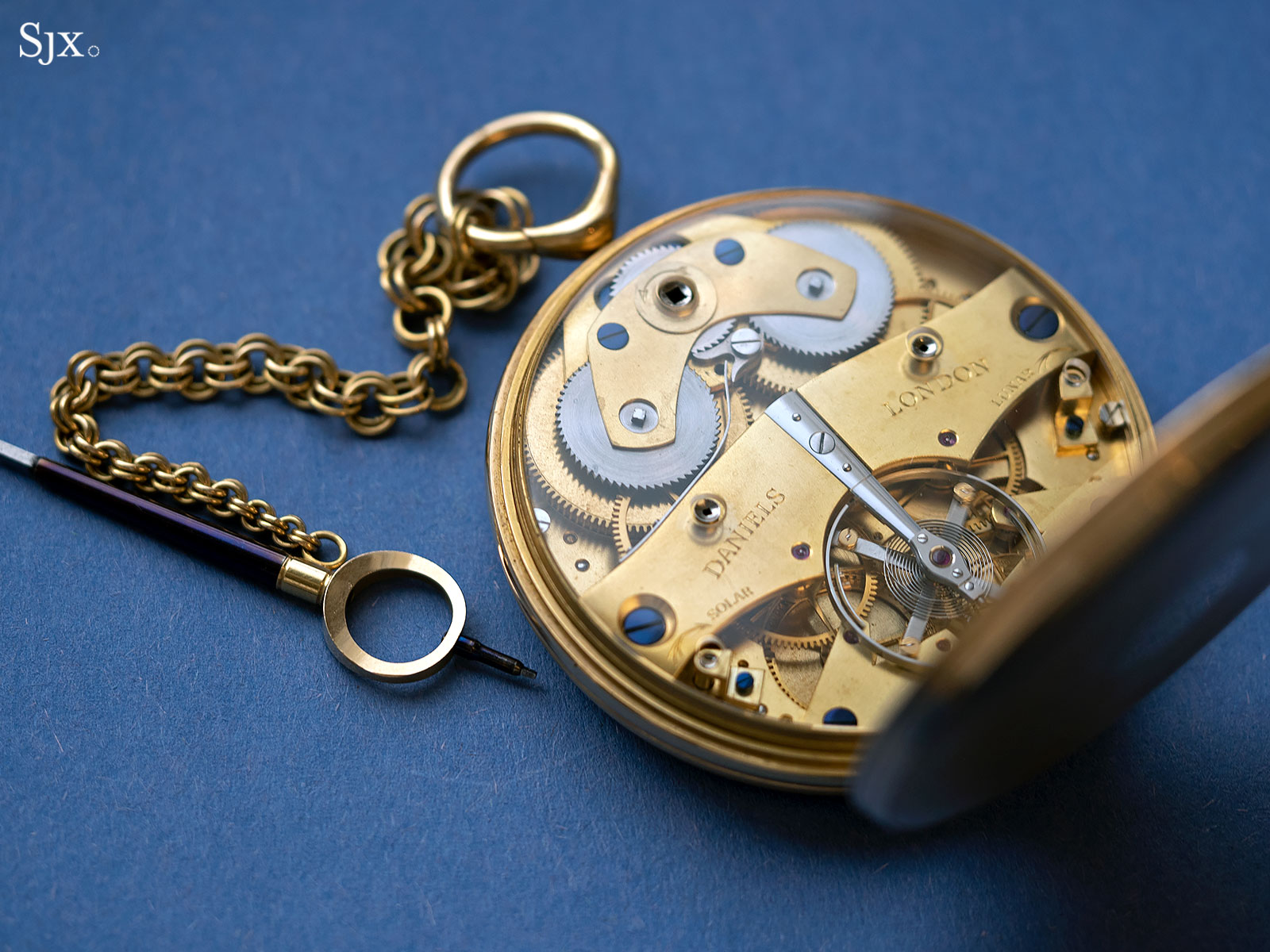
The collector who paid what was then a world record price for a watch was late German billionaire Erivan Haub, who was once the fifth richest man in the world according to the 1992 Forbes rich list. A dedicated collector, Haub owned one of the world’s most important collection of pocket watches – totalling over 800 timepieces.
Sotheby’s will soon sell Haub’s collection, which has been named Mastery of Time, over several auctions. The Space Traveller I is part of the first sale that takes place in July 2019 at Sotheby’s London, and despite a modest estimate of £700,000-1.0m, it will undoubtedly finish as the most expensive watch of the collection.
The origins
The first Space Traveller came about after Daniels had completed five pocket watches – entirely hand-made as all Daniels watches were – equipped with the independent double-wheel escapement that he invented in 1974 with the help of the Derek Pratt, a lesser known but equally talented watchmaker.
Inspired by Abraham-Louis Breguet’s short-lived échappement naturel, or “natural escapement”, the Daniels independent double-wheel escapement features twin escape wheels with a detent in-between, each powered by its own barrel and gear train. Because the contact between the escape wheels and detent is tangential, the escapement operates with almost zero friction.
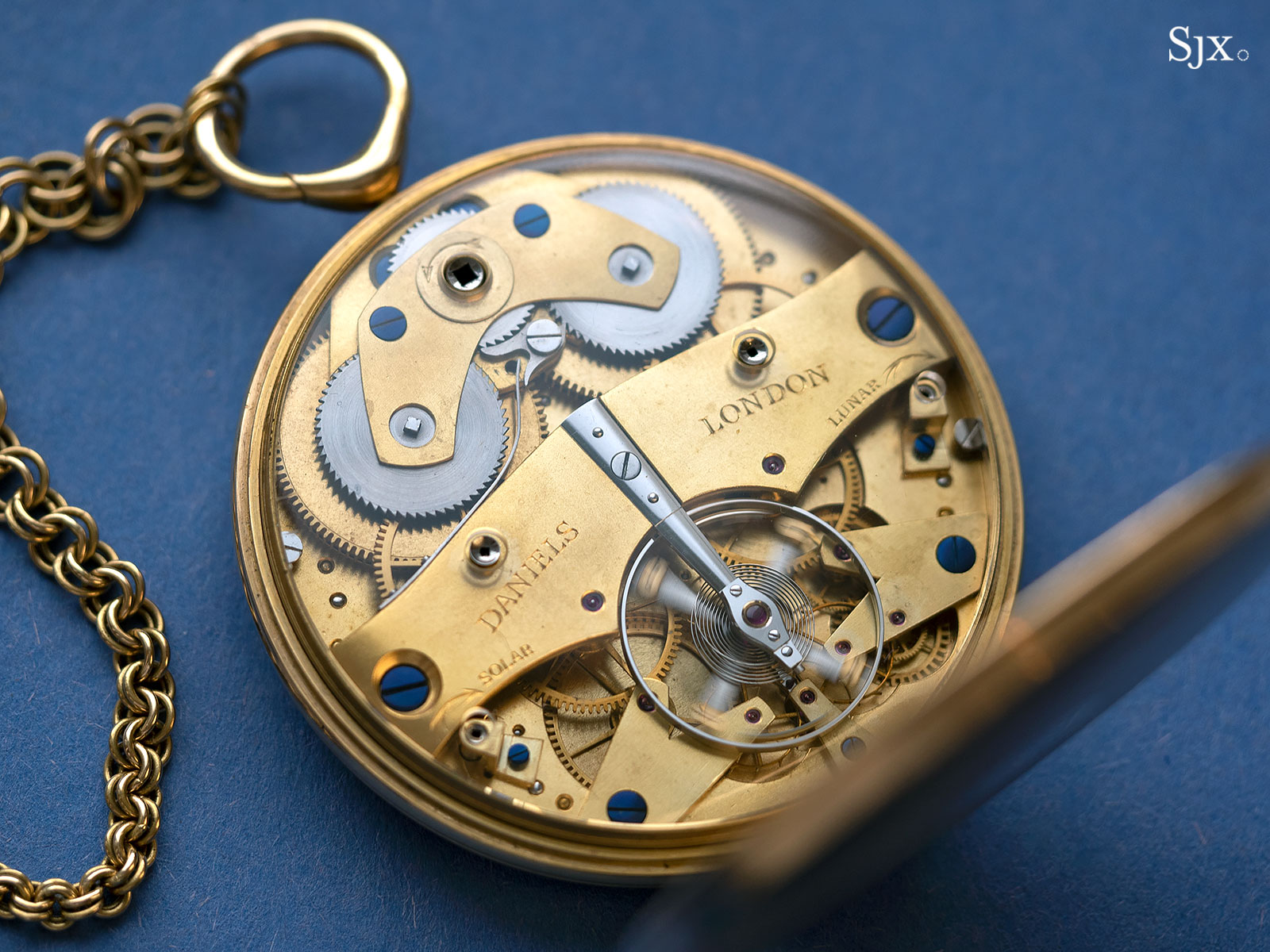
The barrels and gear trains mirror each other, explaining the symmetry of the movement
But as Breguet discovered two centuries before, the independent double-wheel escapement was a dead end, being too tedious to manufacture, assemble, and maintain.
Daniels instead moved on to the co-axial escapement that is now synonymous with the Daniels name. He spent several years refining the invention, and also fitted it to several of his watches, including the flagship Grand Complication, before finally selling it to Omega.
It’s likely at least a million Omega watches with the co-axial escapement have been produced since the first ones rolled off the production line in 1999, proving the longevity and practicality of Daniels’ invention.
Notably, the independent double-wheel escapement recently made it into a wristwatch, over four decades since Daniels first realised it. The escapement was miniaturised for the first time by Charles Frodsham and installed in their Double Impulse Chronometer Wristwatch that was launched last year.
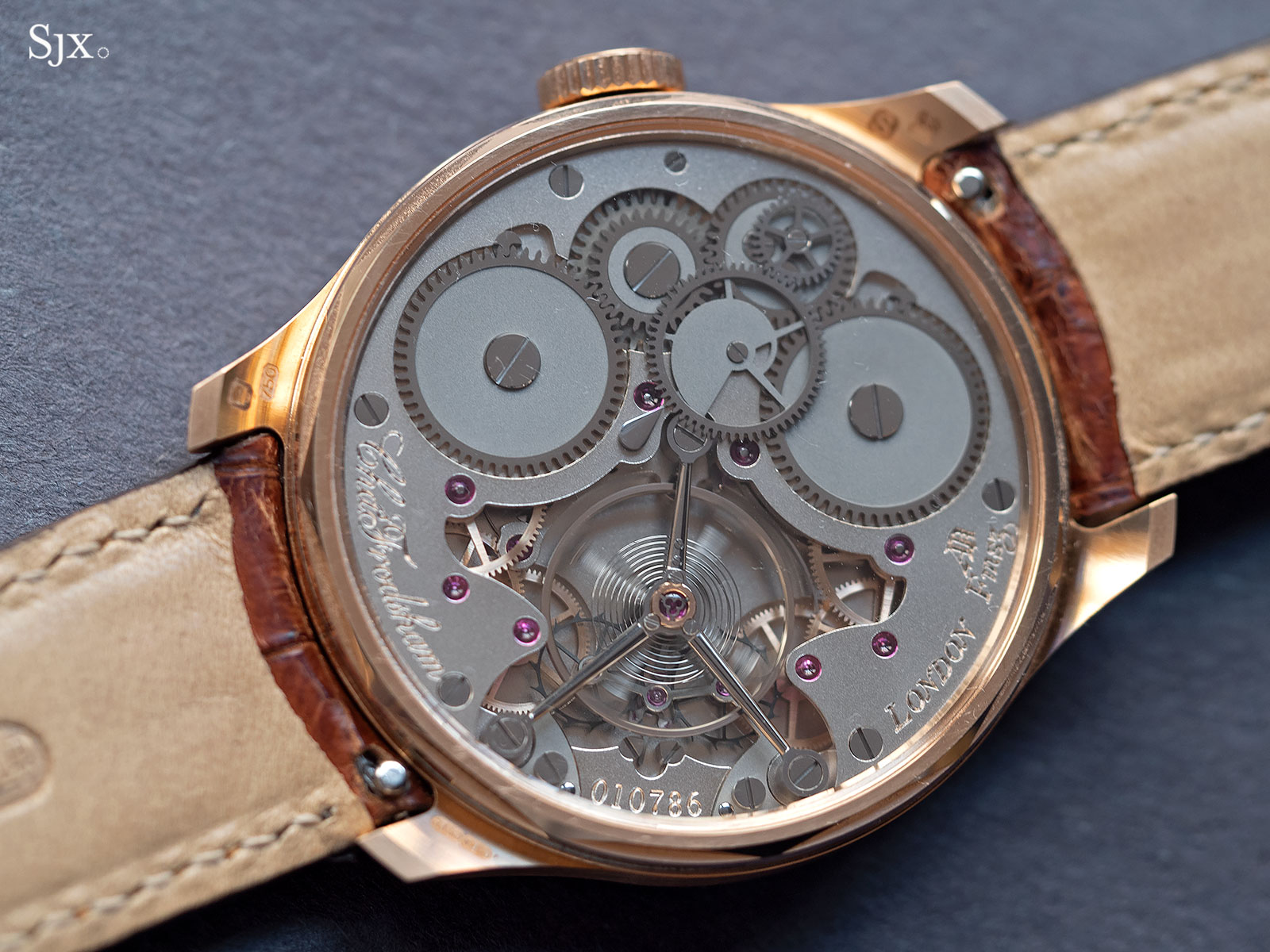
The double-wheel escapement within the Frodsham wristwatch
Before the Space Traveller watches, the very last pocket watch Daniels constructed with the independent double-wheel escapement was sold to the late Theodore Beyer, the seventh generation of his family to run watch retailer Beyer Chronometrie, which is now run by his son Rene.
Writing in his autobiography, All in Good Time, Daniels described Beyer as “a most serious collector of watches”. He also recounted a 1978 dinner with Beyer in Zurich, where Daniels was carrying the fifth pocket watch featuring the independent double-wheel escapement he had made; the first had been commissioned by Illinois millionaire Seth Atwood, an obsessive collector who founded the now defunct Time Museum of clocks and watches.
“During the course of the meal [Beyer] demands to see what I was wearing… he asked if he could buy it… He was adamant that he would not go home without it.” Daniels relented, because “I could, after all, make another.”
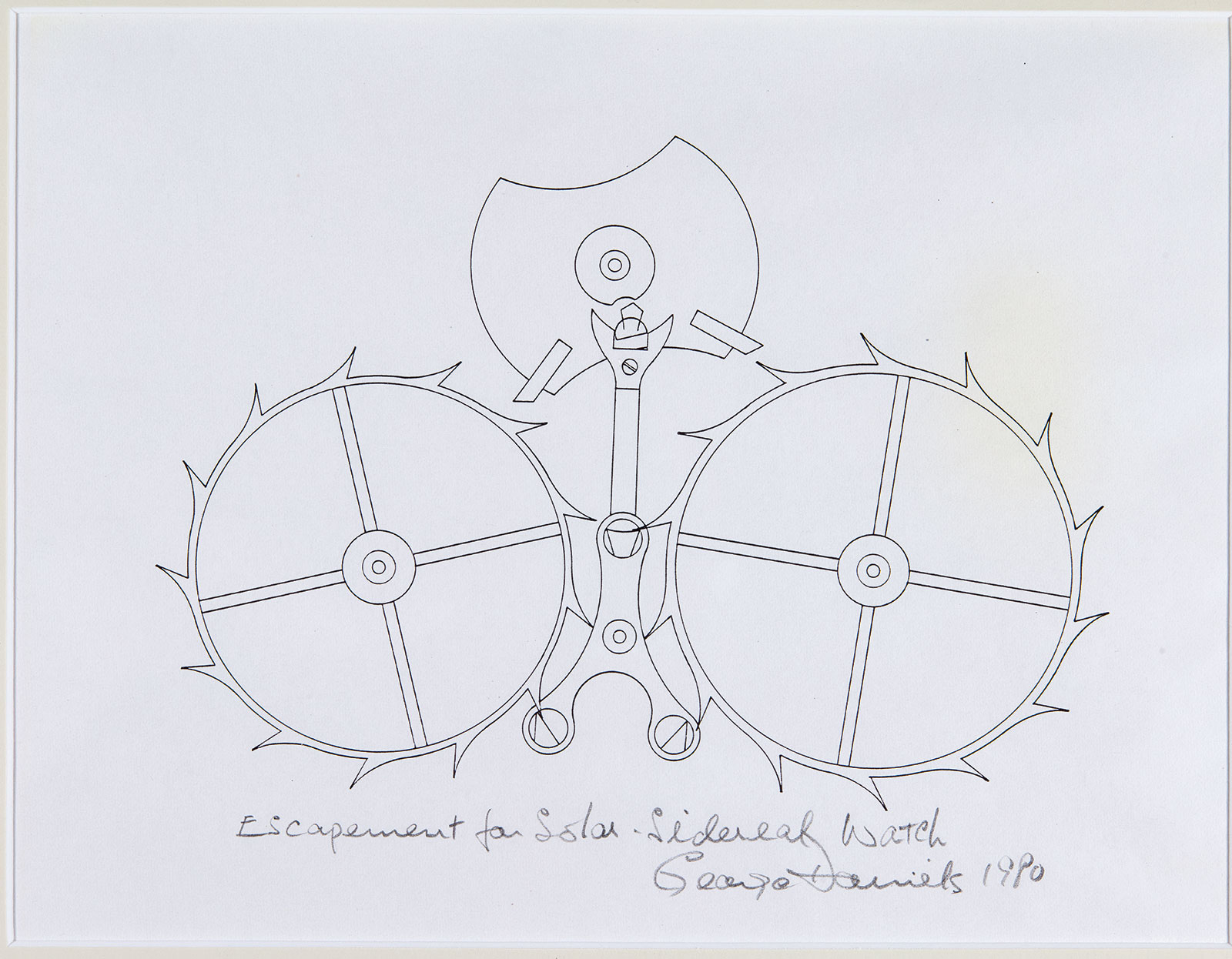
Daniels’ 1980 drawing of the independent double wheel escapement inside the Space Traveller. Photo – Sotheby’s
Twin trains, twin times, and a lot of math
And make another he did. As he explained in All in Good Time, “It occurred to me to make a solar/sidereal watch utilising the same principles of design but with separate calculations for each train.”
In short, he envisioned a movement with the independent double-wheel escapement but with a different time display for each going trains, an idea that took four years to realise.
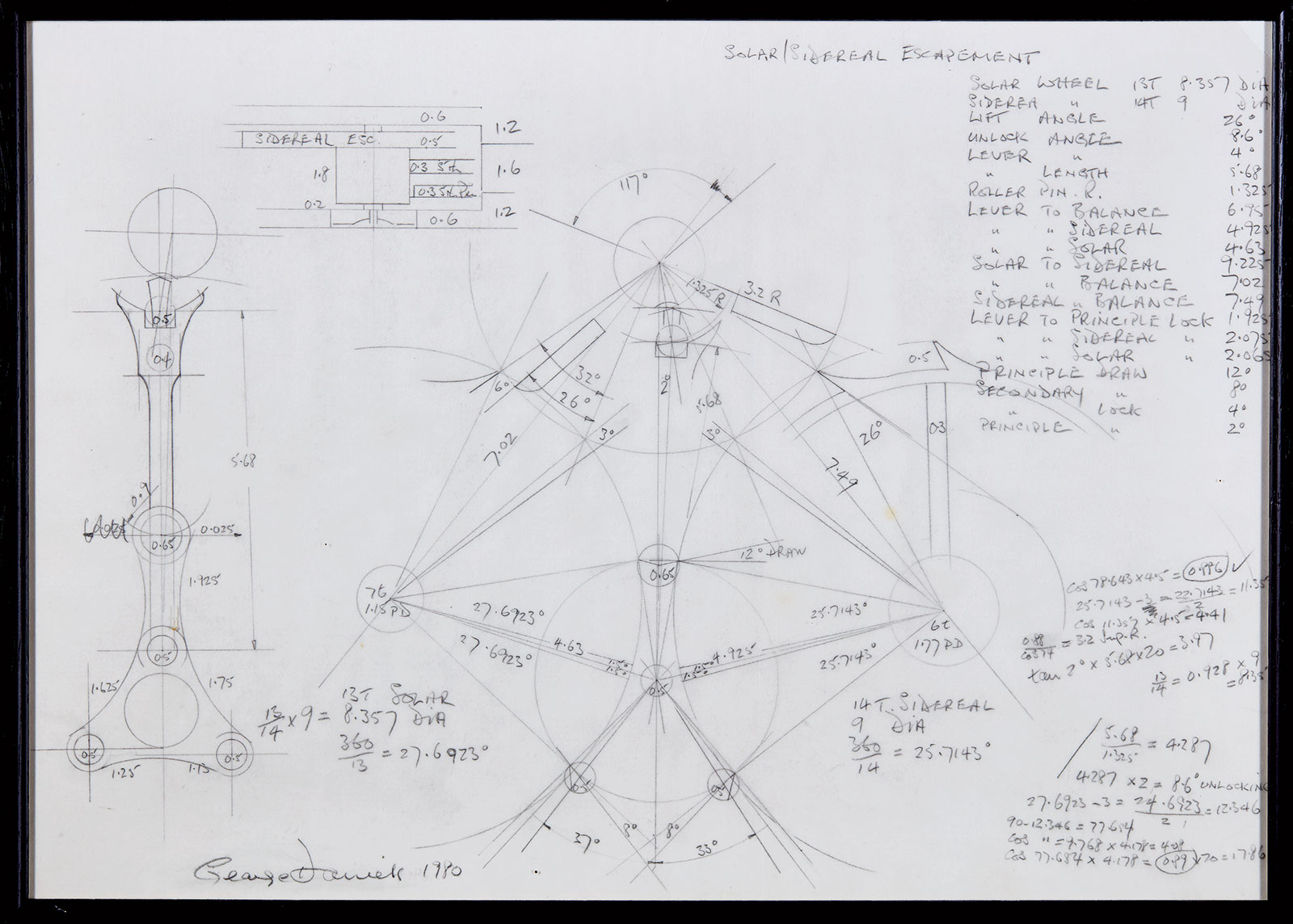
The technical drawing for the solar-sidereal double-wheel escapement, circa 1980. Photo – Sotheby’s
Though Daniels himself managed to design a sidereal gear train with an error of just 1.27 seconds a year, he thought “there might be a better solution” as he put it in his autobiography. So he approached a friend at Cambridge University in search of a mathematician who could help him perfect the going train.
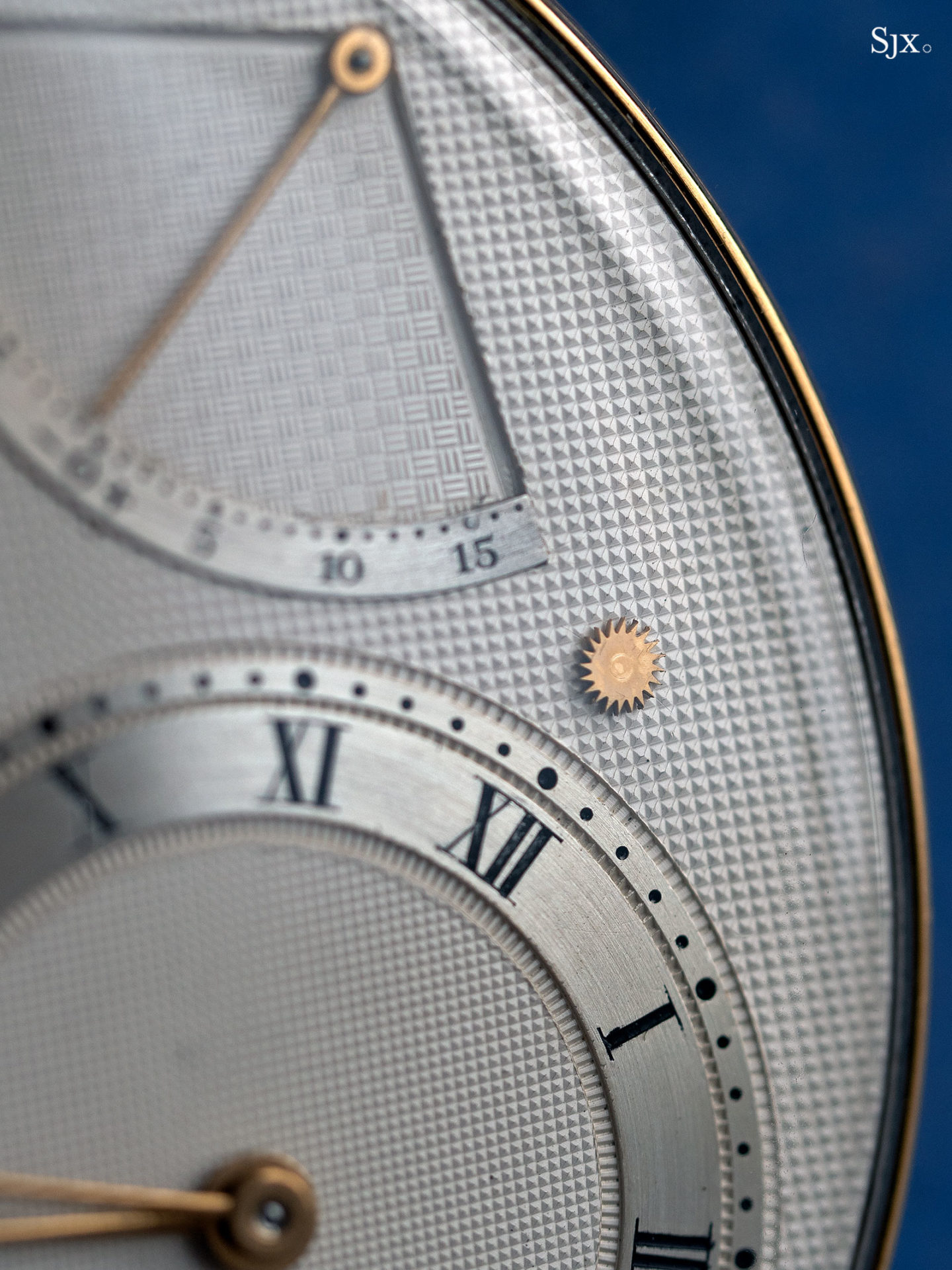
The golden Sun on the dial of the Space Traveller I
He was then introduced to Dr Henry Ellis Daniels, a prominent statistician who also happened to be a watchmaker. Dr Daniels was able to respond with “a better solution within days, and modestly claimed he had found the answer in a book.” The solution was an error of just 0.4 seconds a year.
As a result, Daniels named the watch Daniels Squared, in acknowledgement of Dr Daniels’ contribution. But the watchmaker also christened his creation the Space Traveller’s Watch, a catchy name that was a reference to the then recent 1969 Moon landing.
Achieving the 0.4 second deviation per year required deft calculation and subtly different gearing for each going train. Although each wheel train has the same layout and operates on identical principles, they are minutely different.
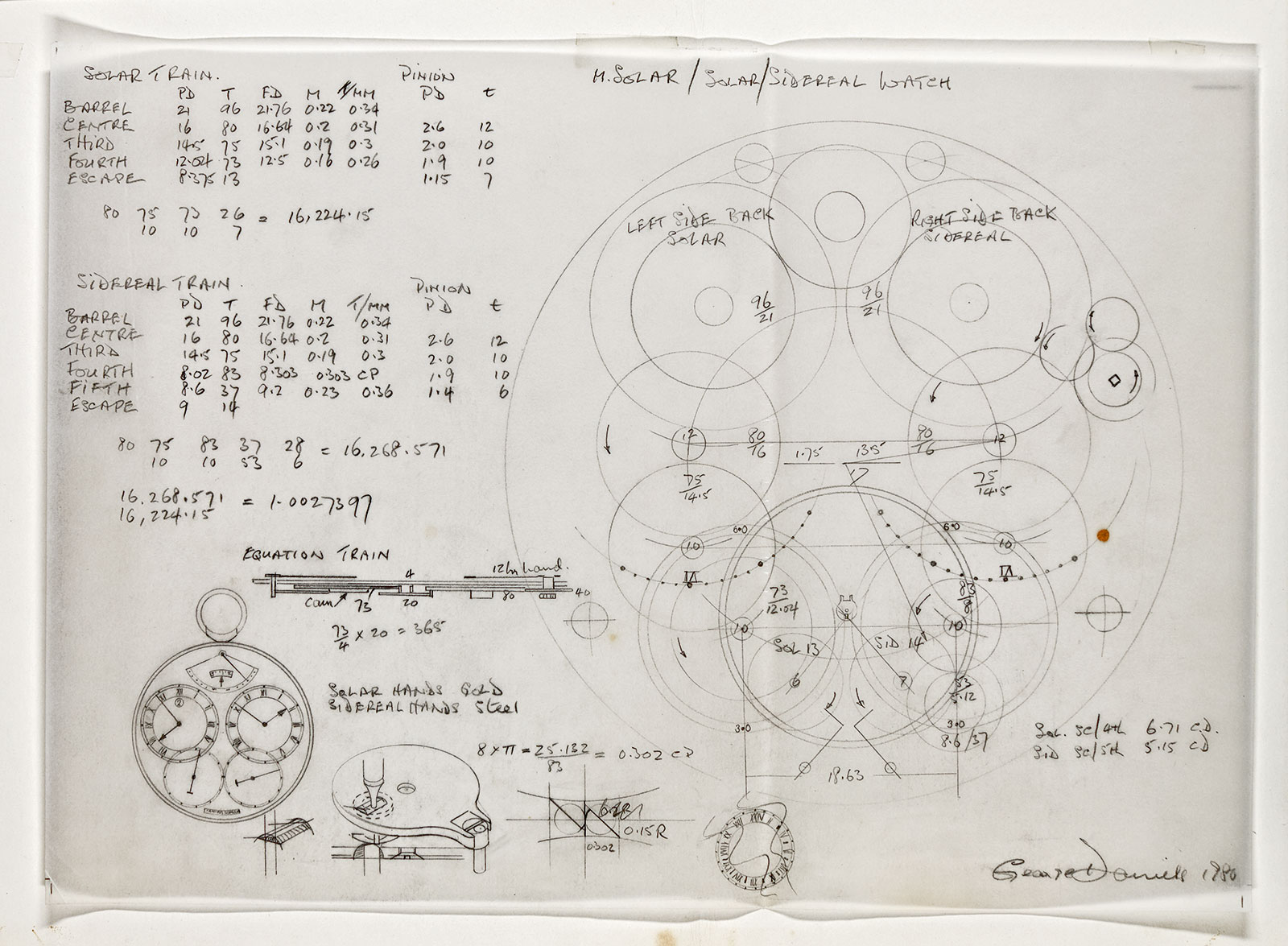
The solar and sidereal trains of the Space Traveller. Photo – Sotheby’s
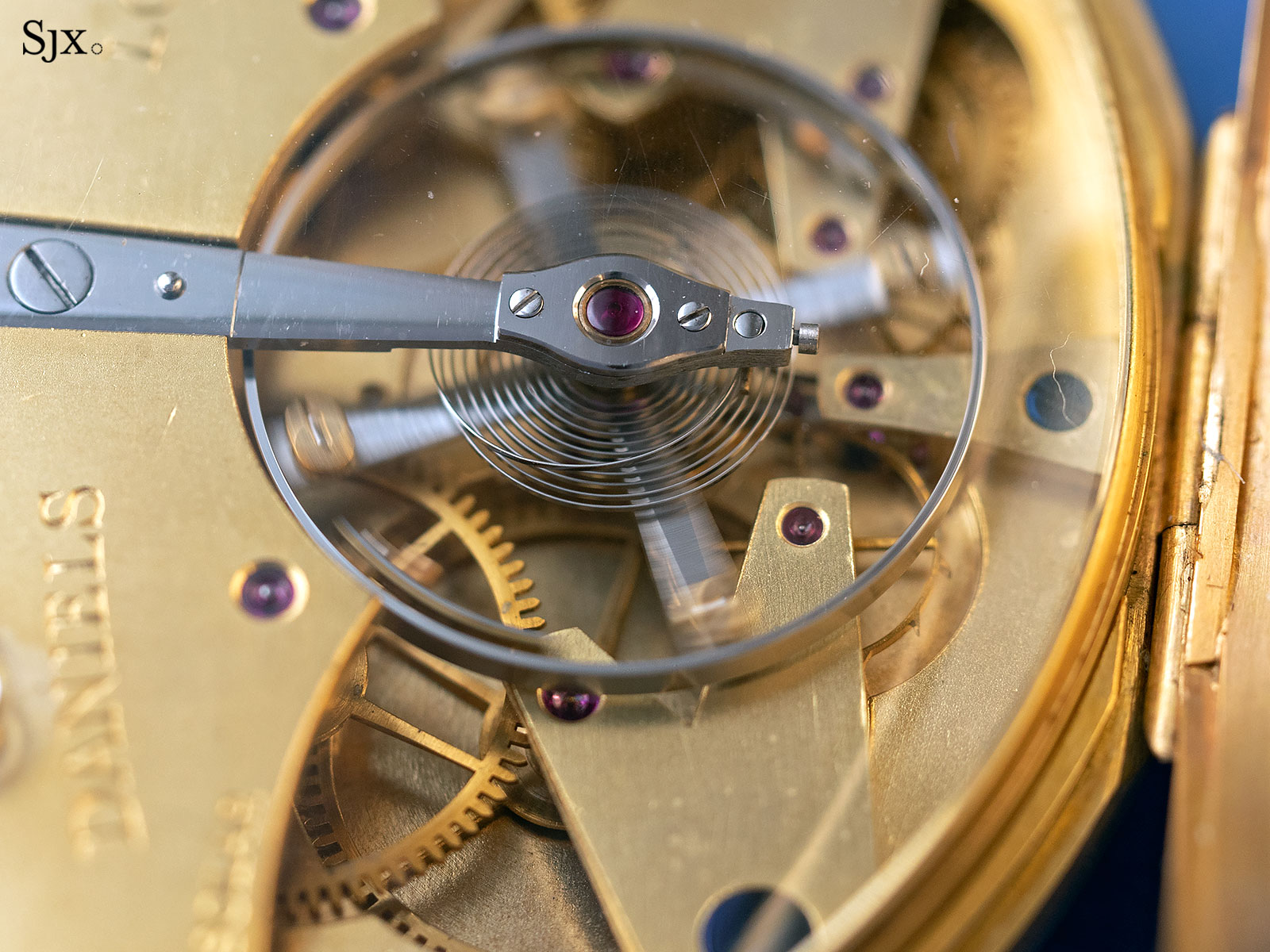
The third, fourth and escape wheels of the mean solar time train visible below the balance wheel
Both going trains have identical barrels, centre and third wheels. While the mean solar time train continues as in a conventional movement, Daniels opted to insert an additional wheel between the seconds and escape wheels on the sidereal train in order to change its gear ratios.
That also allowed for a sidereal time seconds hand on the dial, but more importantly optimised the reliability of the movement by avoiding having to use wheels with large number of teeth further up the gear train.
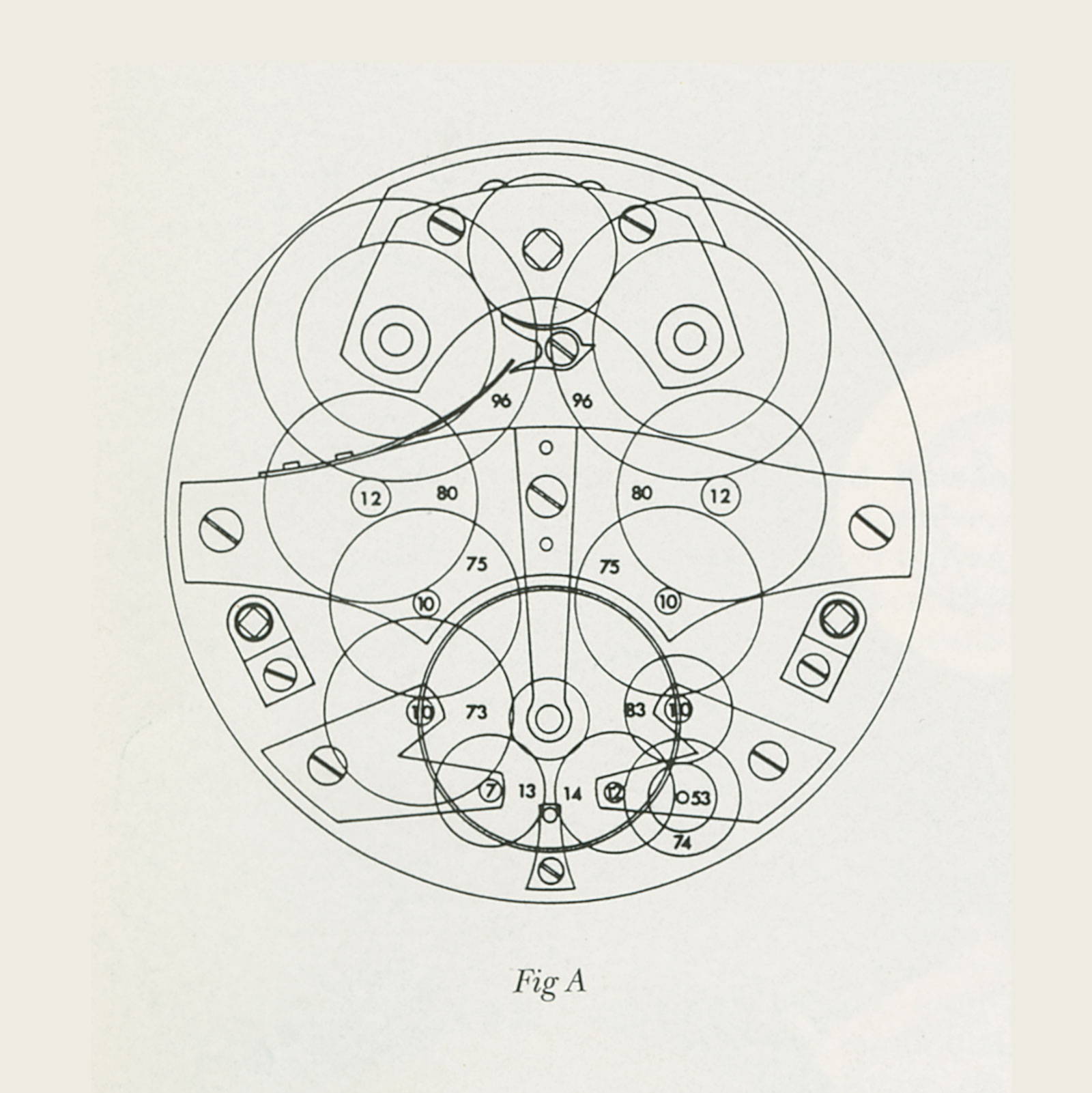
The Space Traveller I going trains detailing the number of teeth on each wheel. Photo – Sotheby’s

The train for the sidereal time display under the bridge marked “London”
Although they look identical when examined through the display back, the twin escape wheels are different – that on the sidereal train has 14 teeth, while the escape wheel for mean solar time only 13.
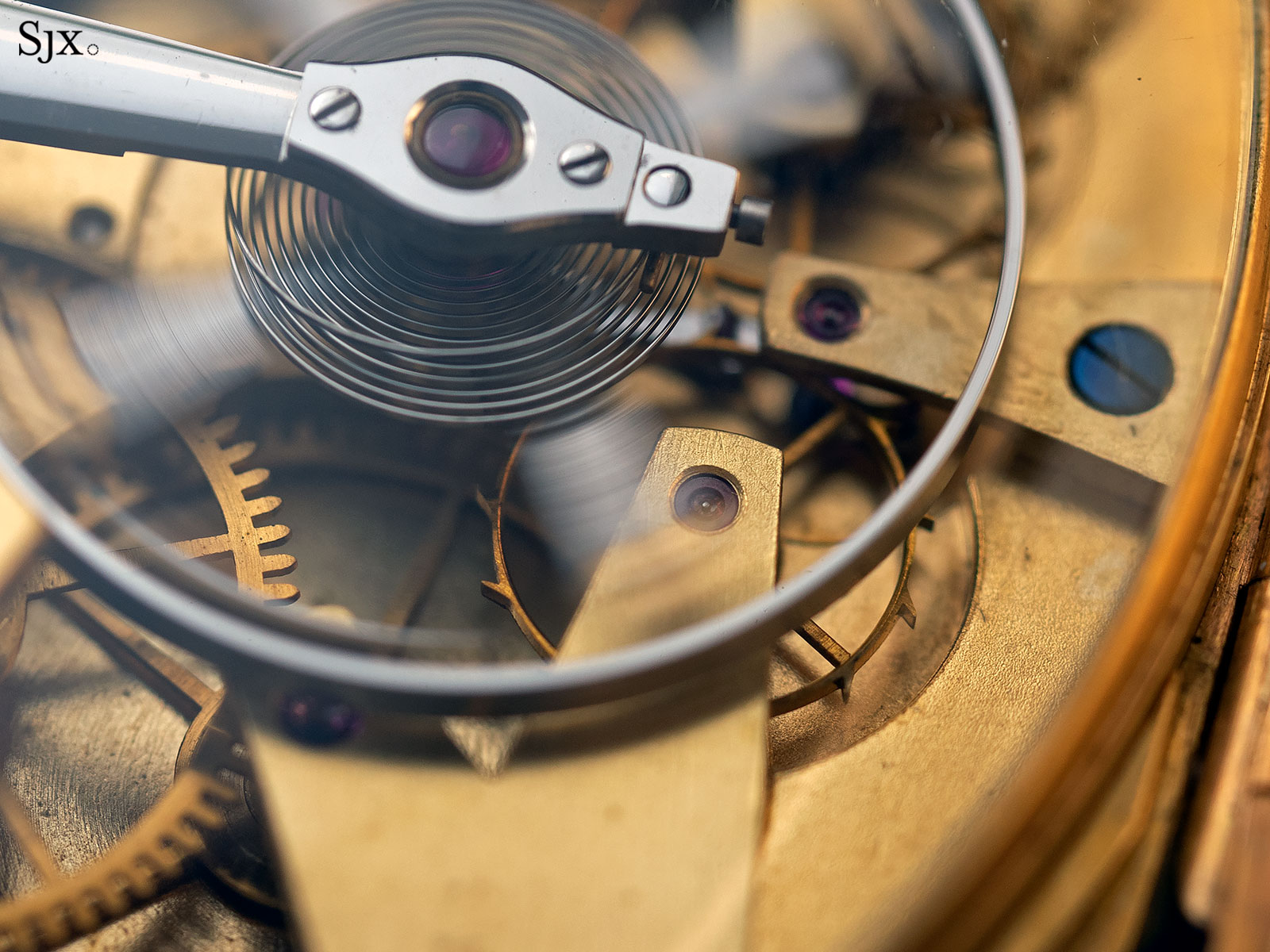
The escape wheel for the mean solar time display
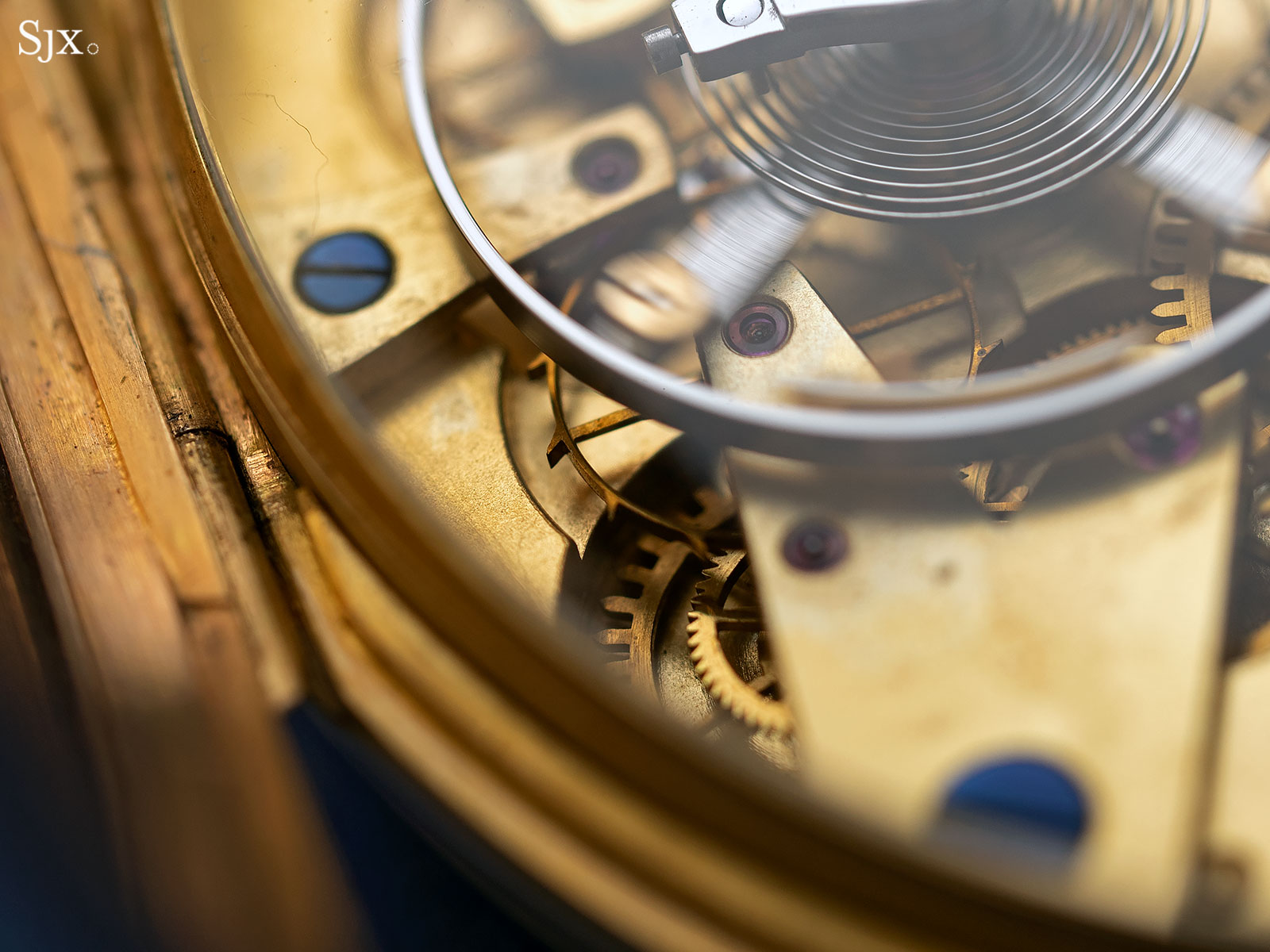
And the escape wheel for sidereal time, with one less tooth, with the additional gearing visible just beside it
For the aesthetics of the watch to fit the movement he devised, Daniels looked to Breguet, unsurprisingly. Specifically, he was inspired by the 19th century Breguet pocket watches no. 2807, 3862 and 3863.
In fact, it was possible that Daniels himself had worked on pocket watch no. 3862 when he worked at Breguet in Paris when it was owned by the Brown family. Now in the Breguet Museum, watch no. 3862 was started between 1821 and 1824, then left unfinished until it was completed and sold in 1968.
Watch no. 2807 is in the Patek Philippe Museum, having sold for 2.26m Swiss francs in 2002, while watch no. 3863 is in a royal collection in the Middle East, most likely that of the Sultan of Oman.
All three watches have a dial layout similar to the Space Traveller, with symmetrically placed twin sub-dials, one for mean solar time and the other for apparent solar time, along with Sun and star emblems for each. The crucial purpose of these watches was to display the equation of time – the difference between mean solar time, or the standard, 24-hour day, and apparent solar time, or the day according to the movement of Sun.
But the three watches are all powered by a single barrel and going train. Daniels, in other words, invented a new movement incorporating Breguet’s natural escapement to suit the 19th century watchmaker’s dial design.
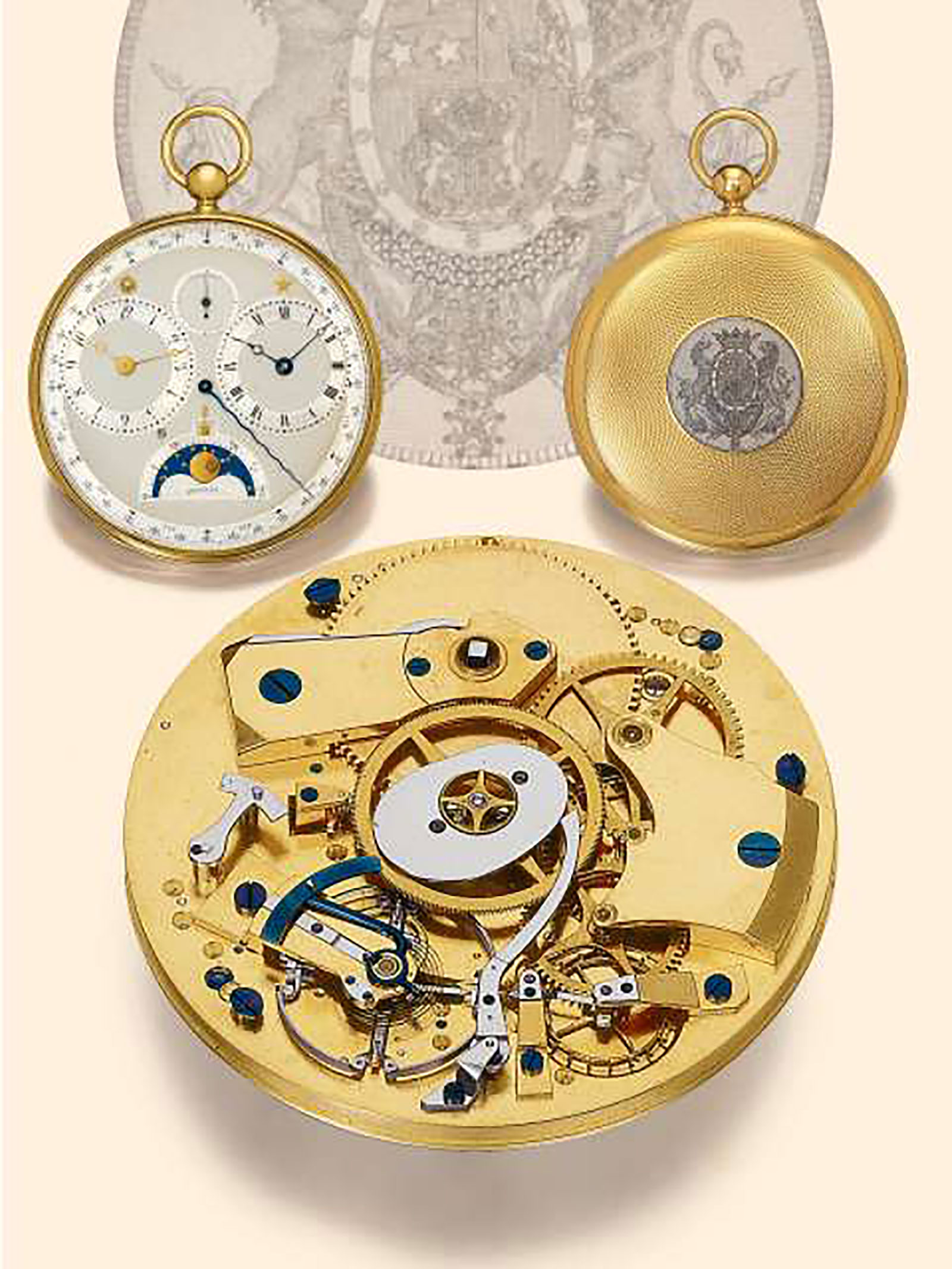
Breguet watch no. 2807. Image – Antiquorum
The Space Traveller I returns
Although unseen in public for almost 31 years, the Space Traveller I is well known enough that it has almost become mythical. Such exalted status might be a set-up for disappointment if the watch doesn’t live up to its reputation.
Fortunately the Space Traveller I is impressive in the metal. It is a large watch at 62mm in diameter, and entirely in 18k yellow gold. Though the watch is weighty, the case is relatively slim, giving it a refined profile.
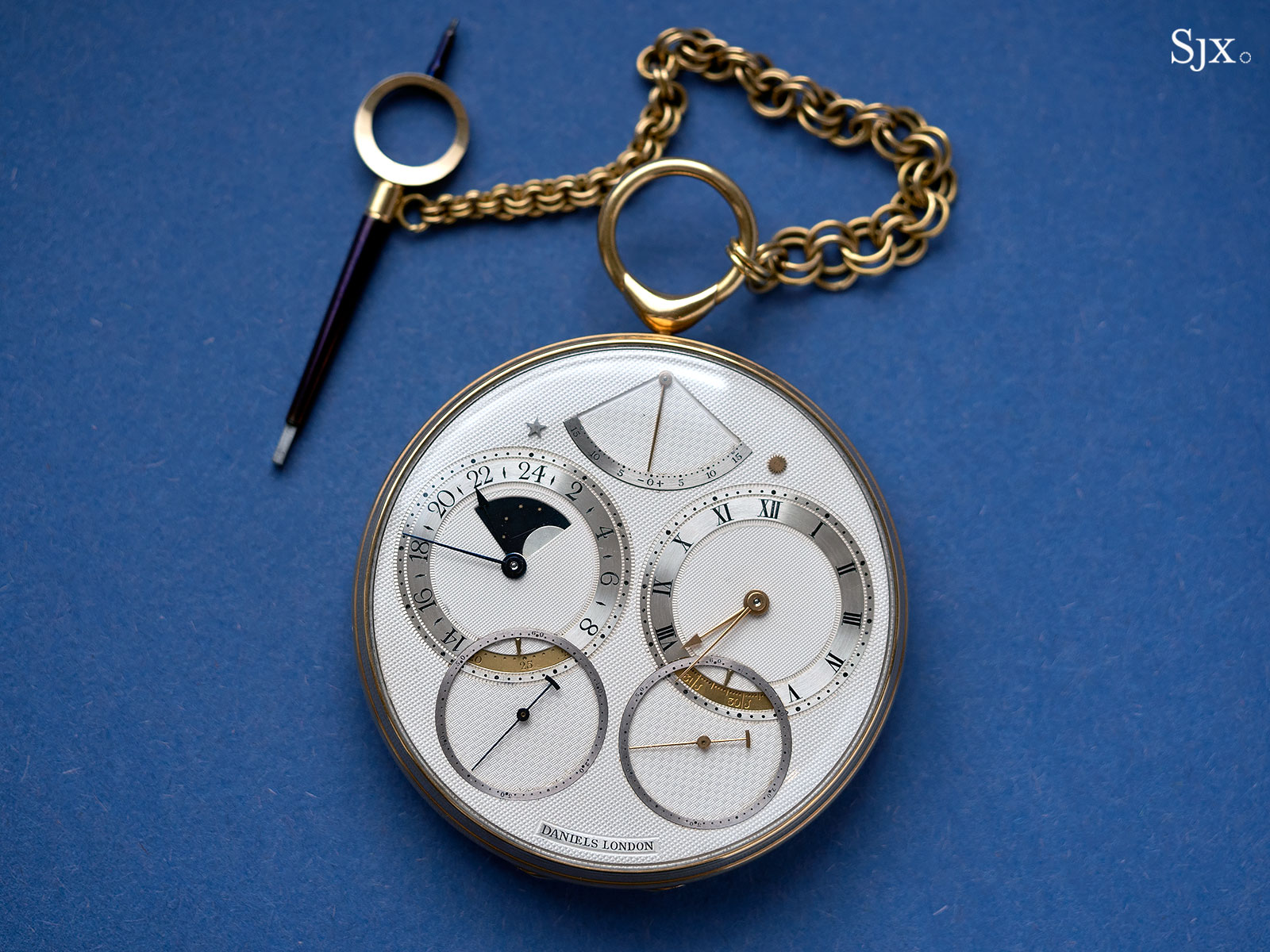
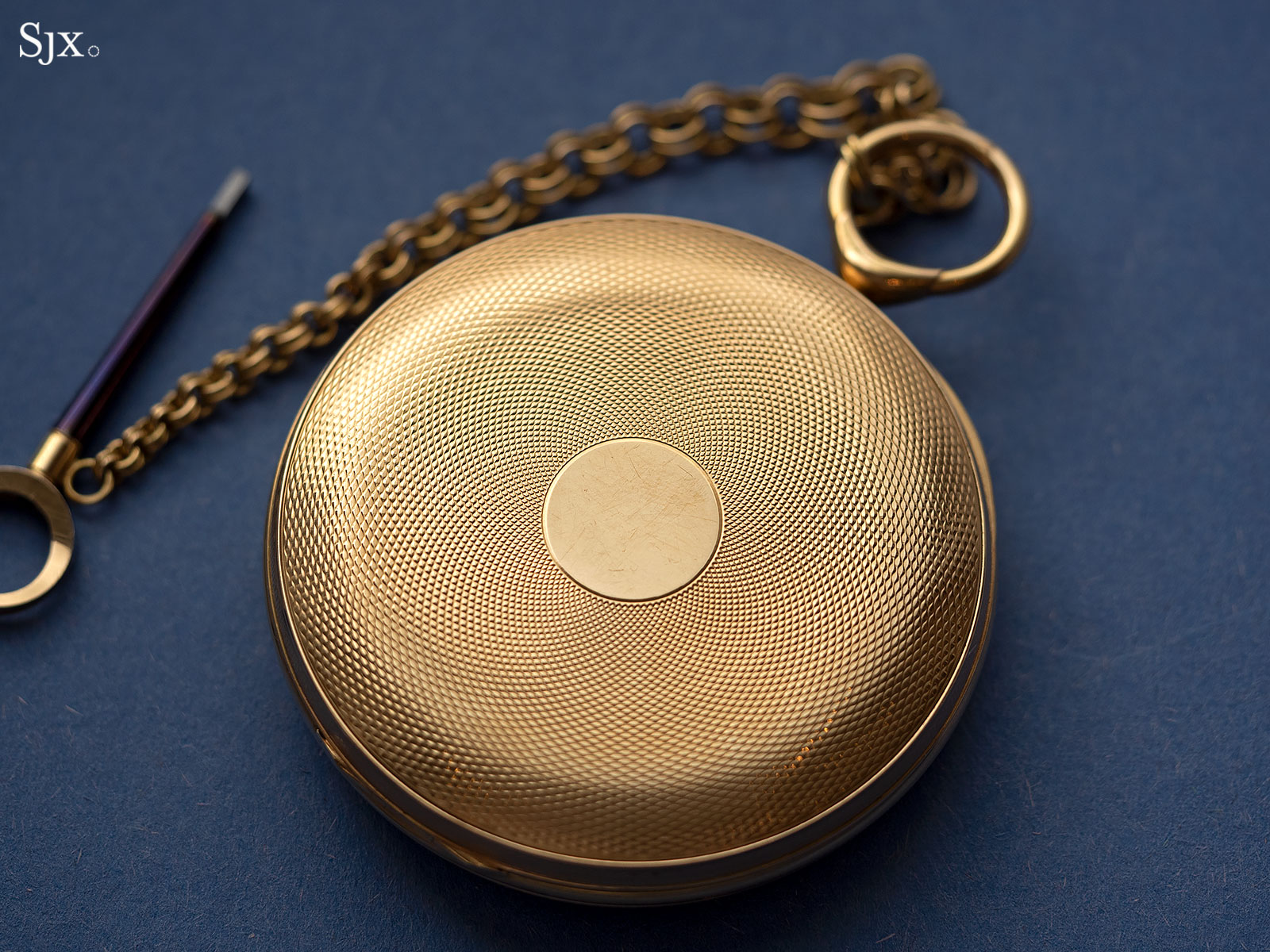
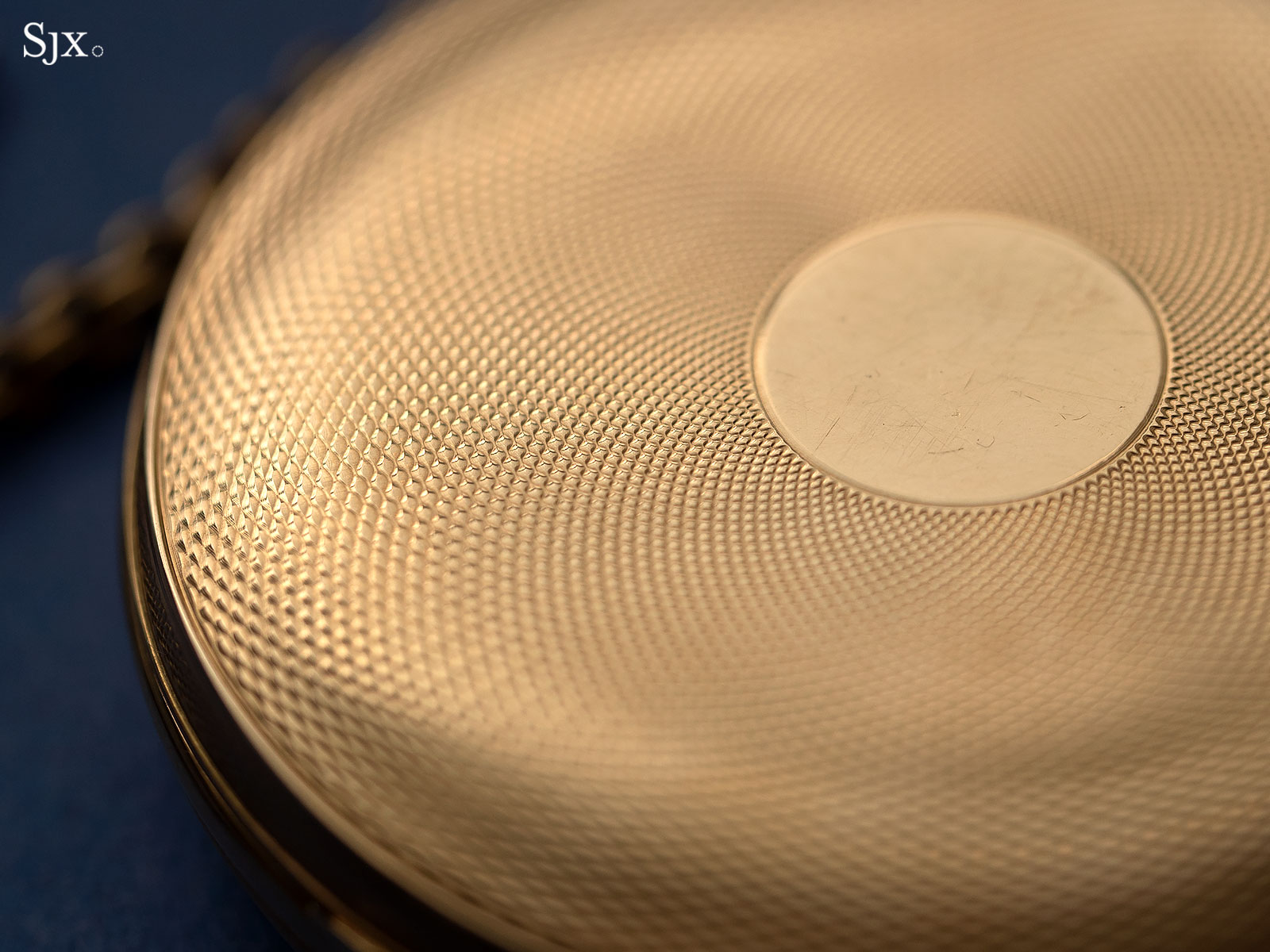
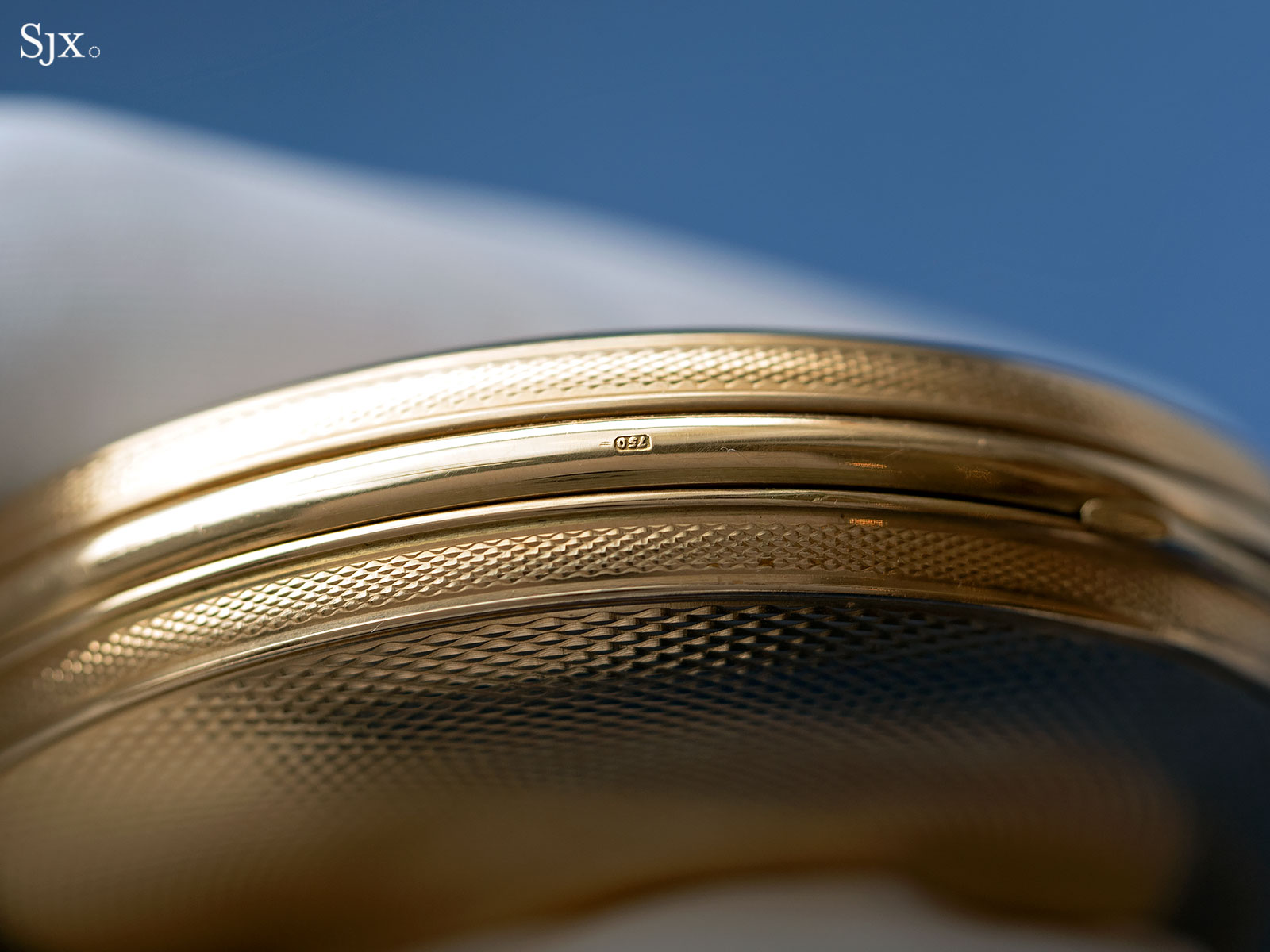
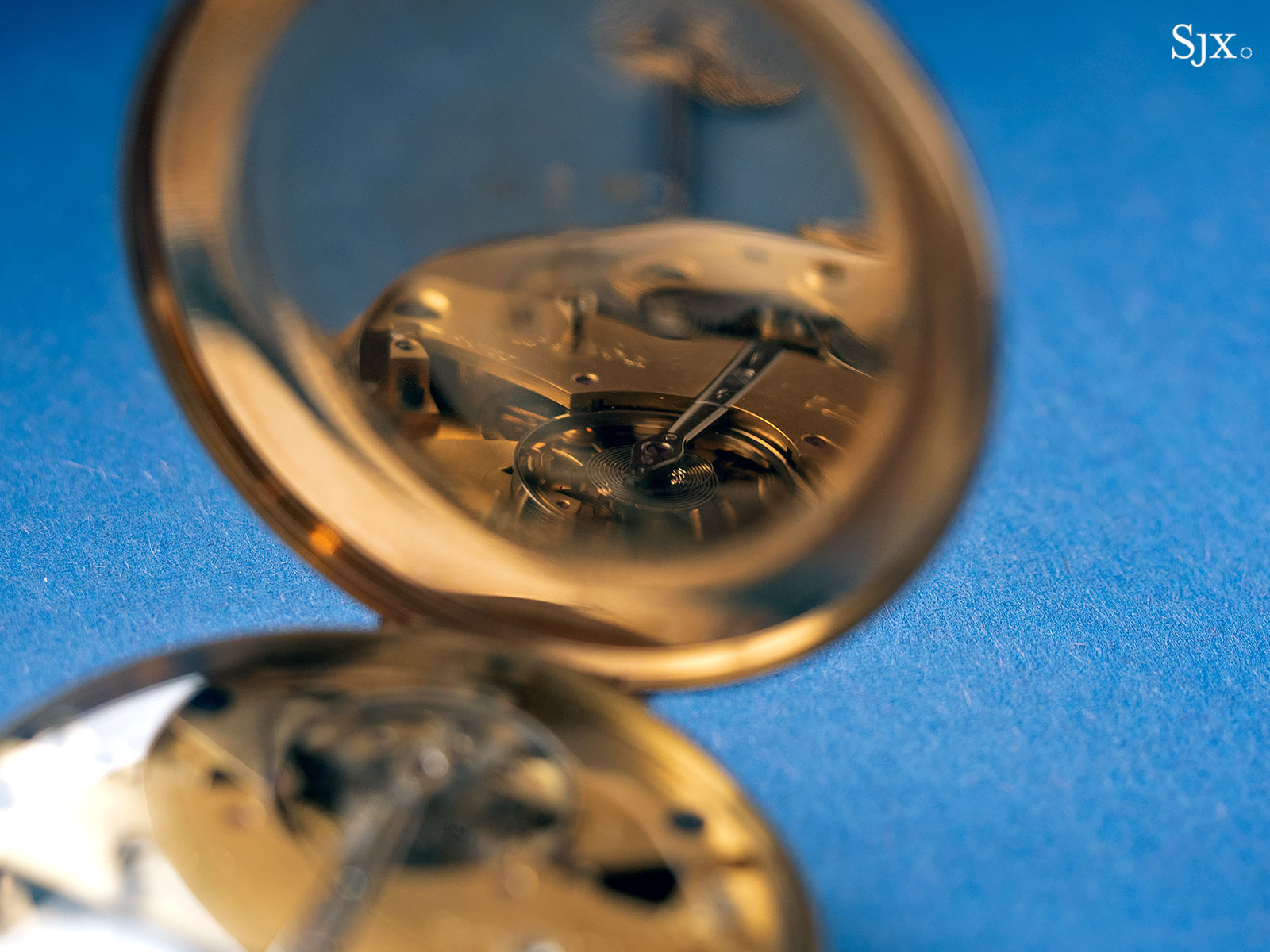
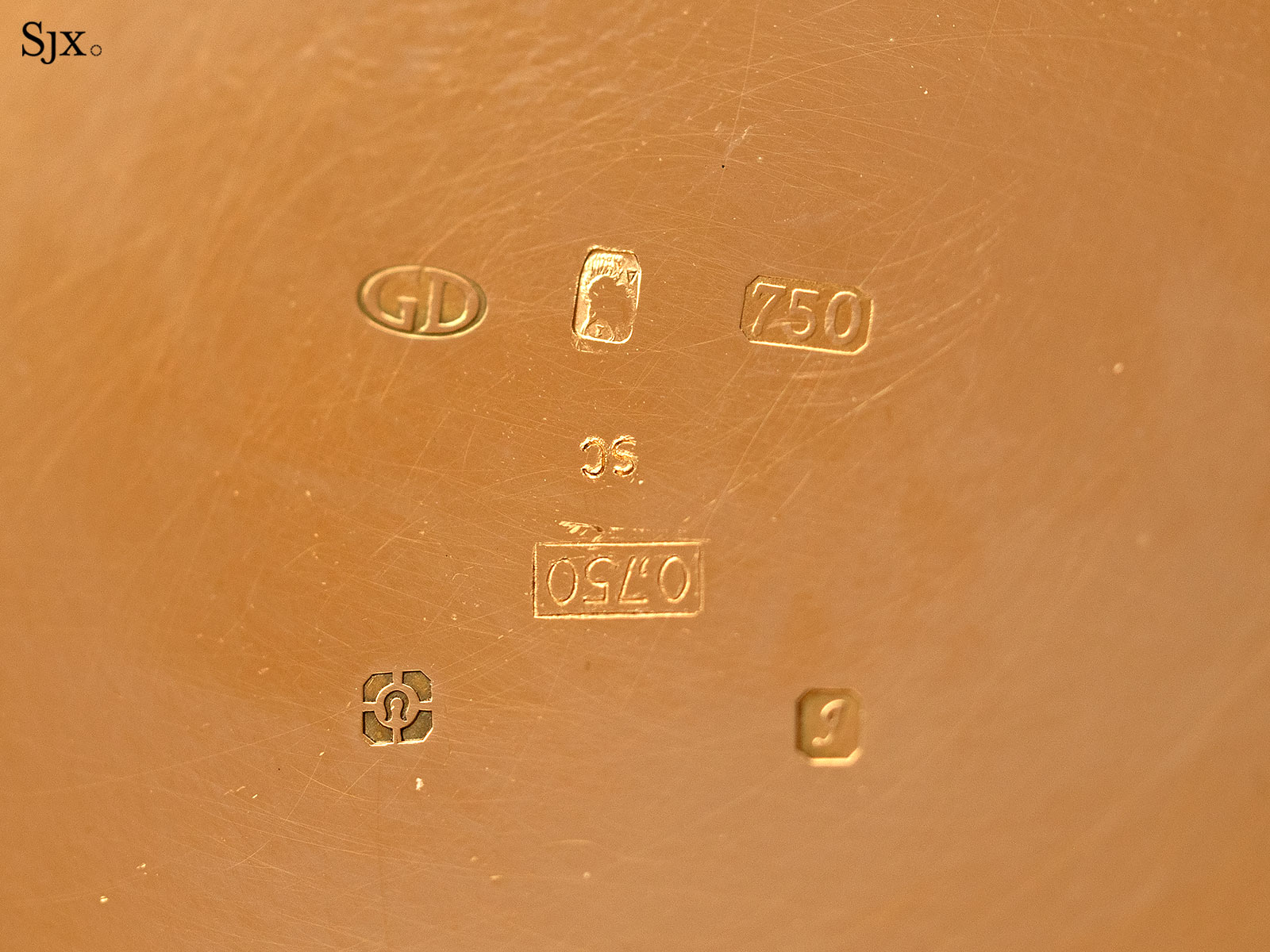
The hallmarks inside the case that indicate it is 18k gold, imported into the United Kingdom, and hallmarked in 1983.
Visually it is typical of Daniels designs, which was in turn heavily inspired by Breguet. It is made of solid silver that’s been finely engine-turned, with all the markings engraved by hand.
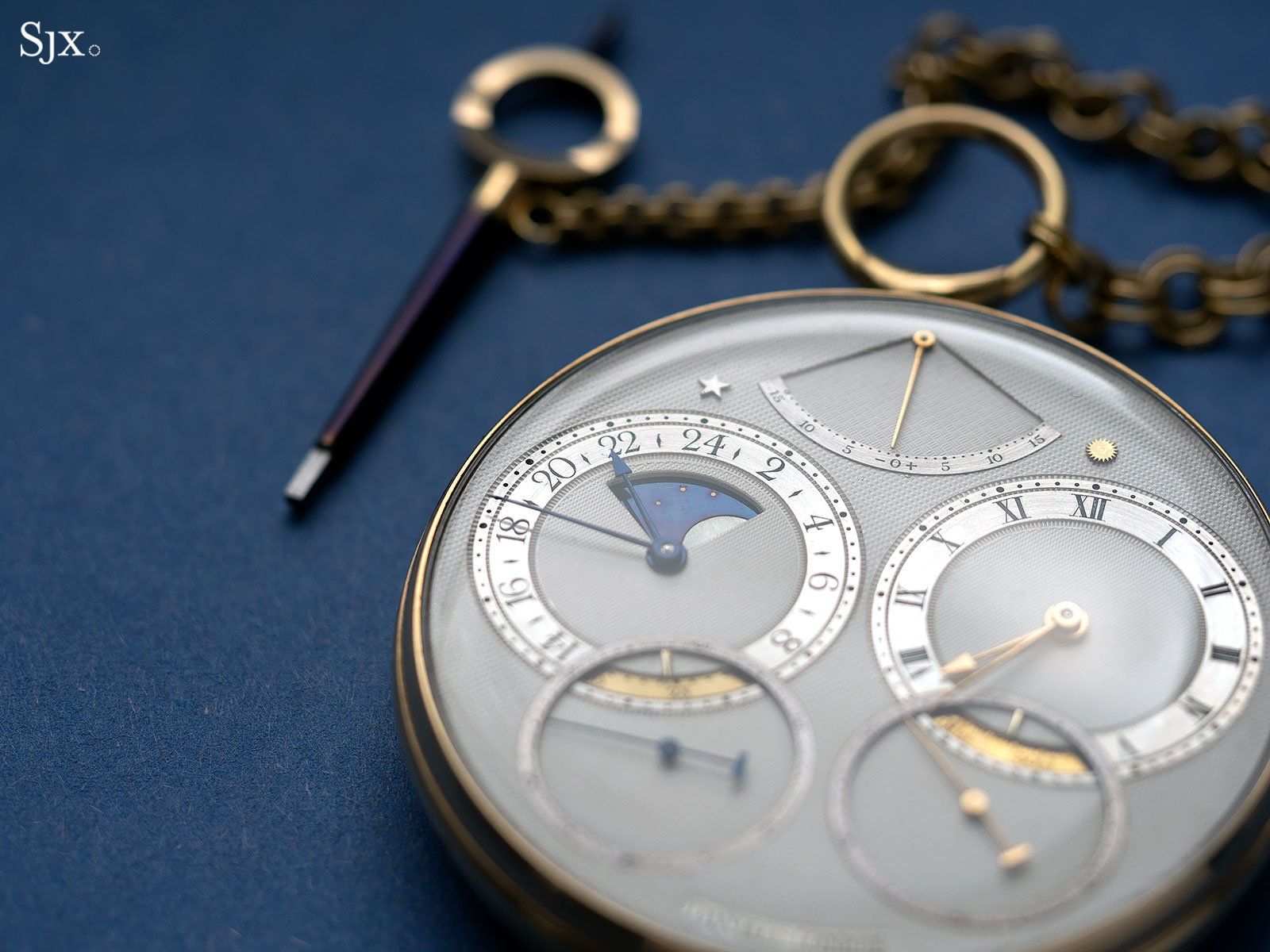
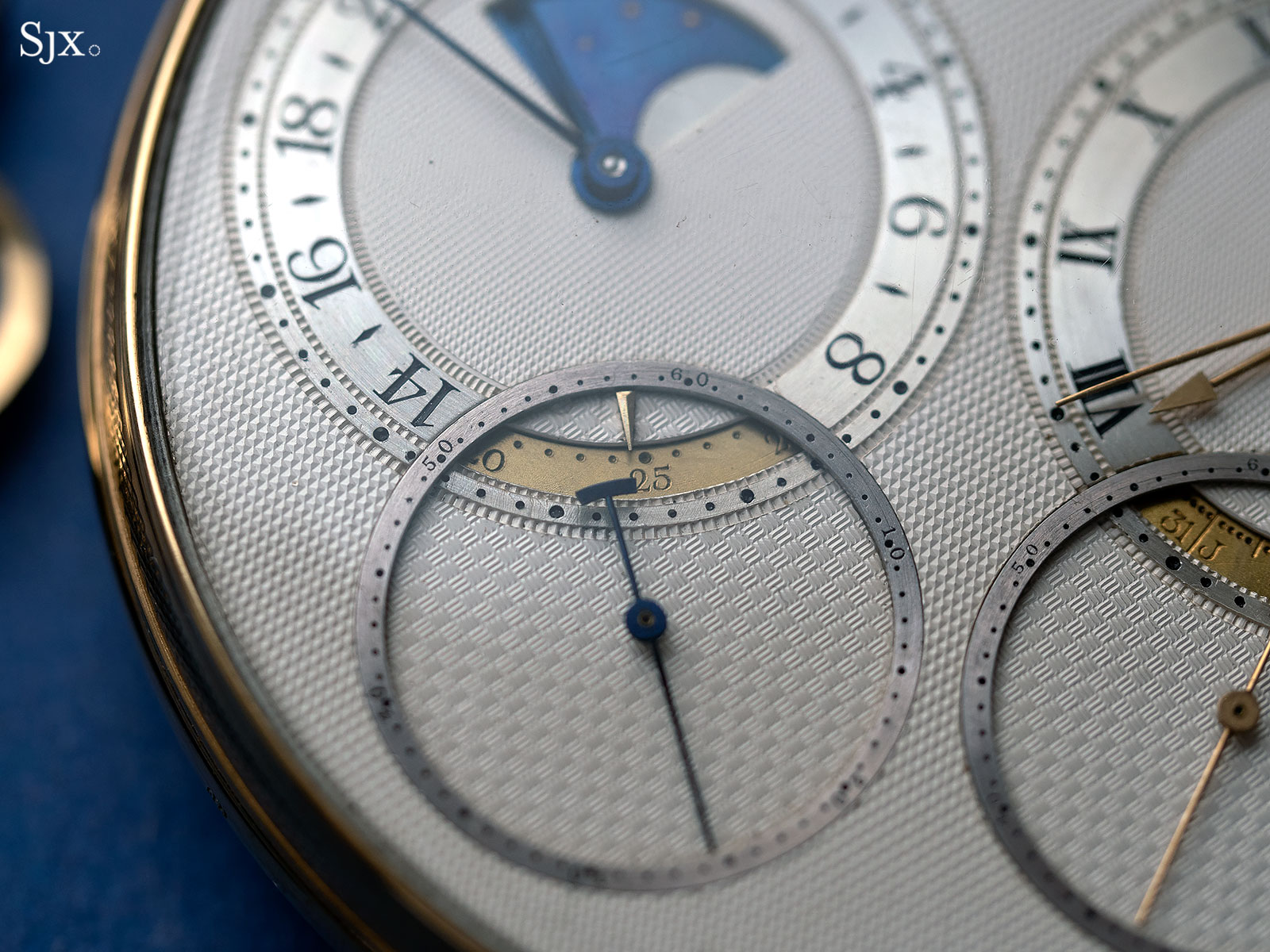
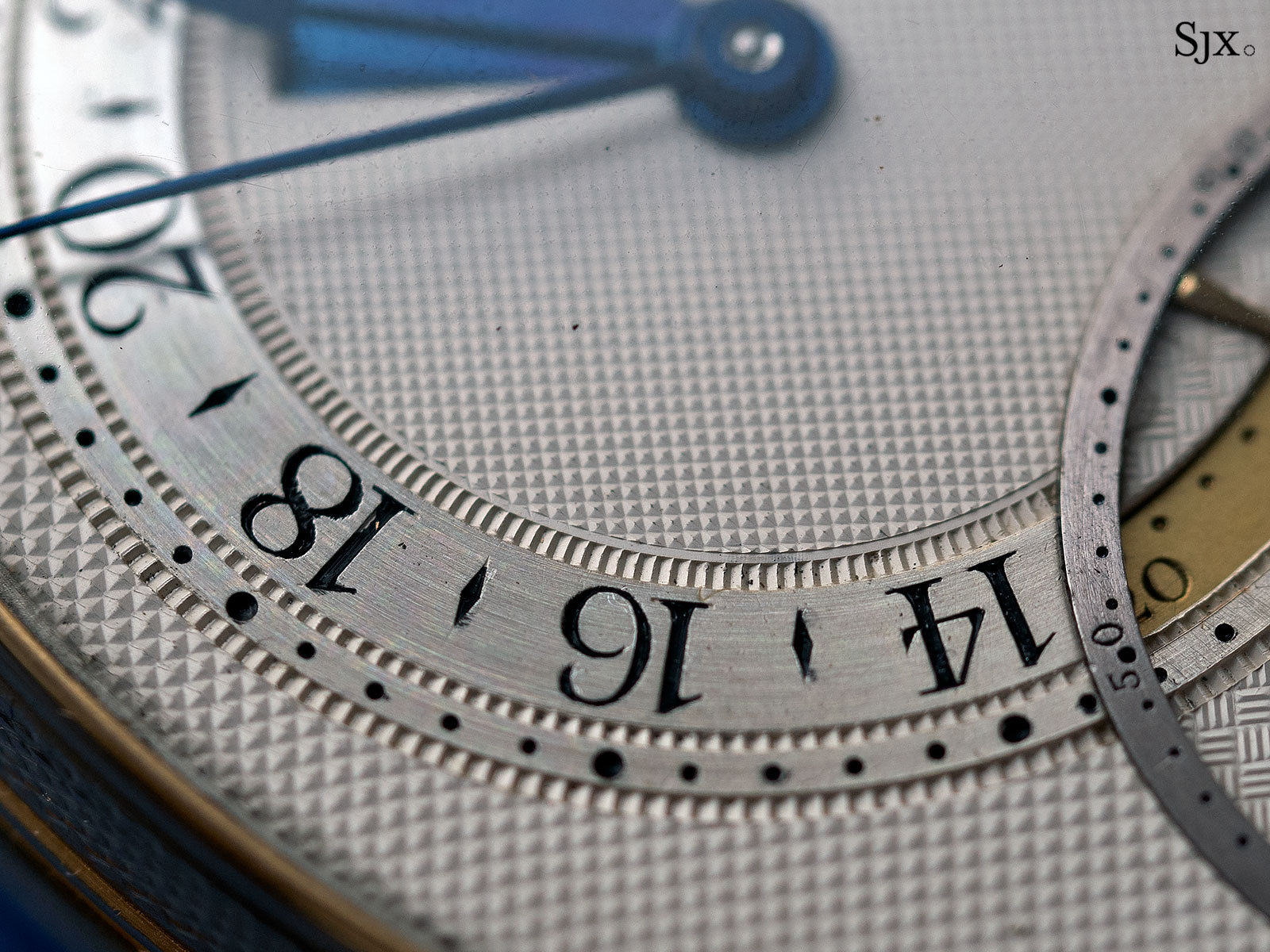
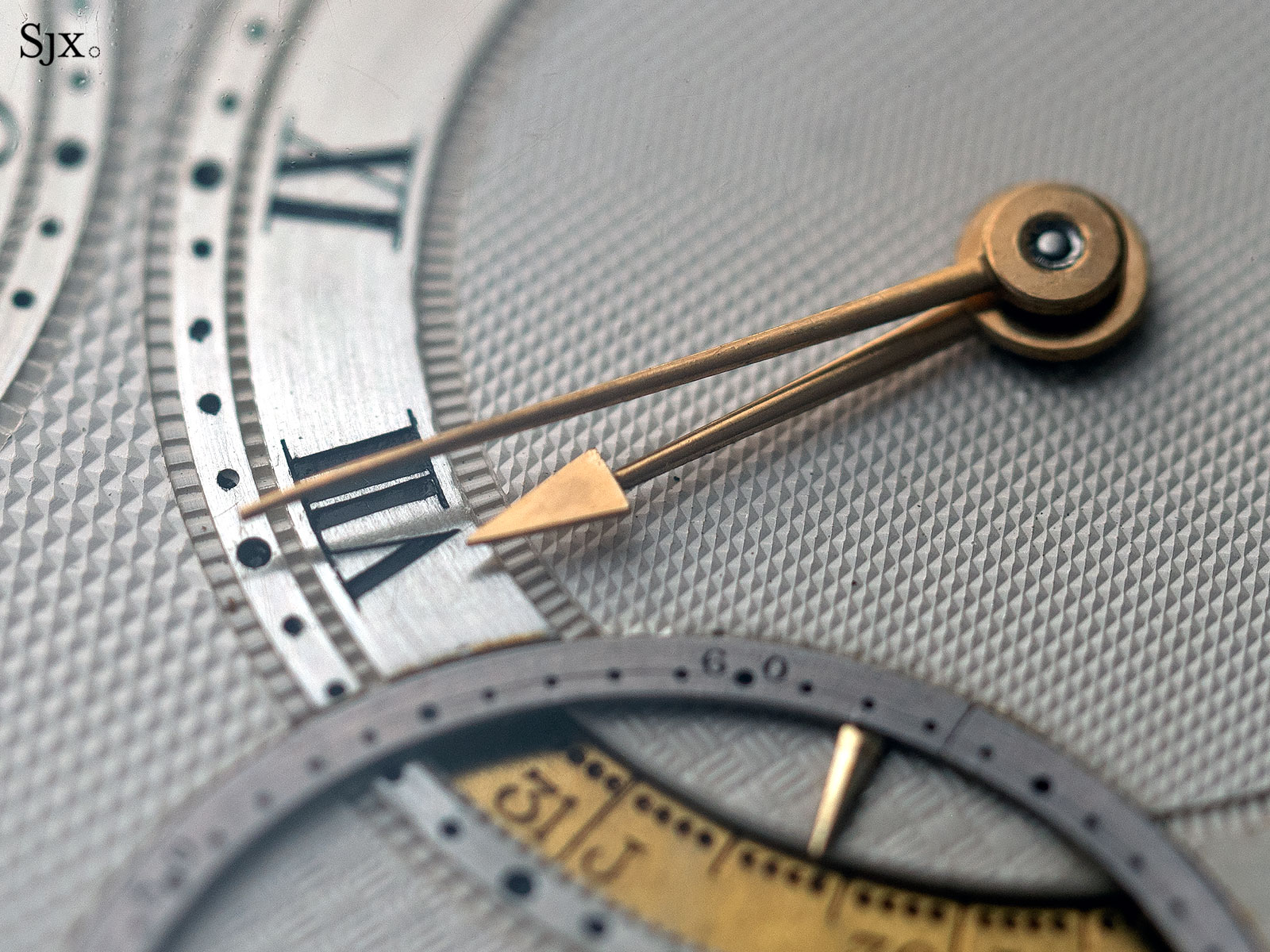
The dial is characterised by several sub-dials, but arranged symmetrically, with all elements sensibly laid out and legibly styled.
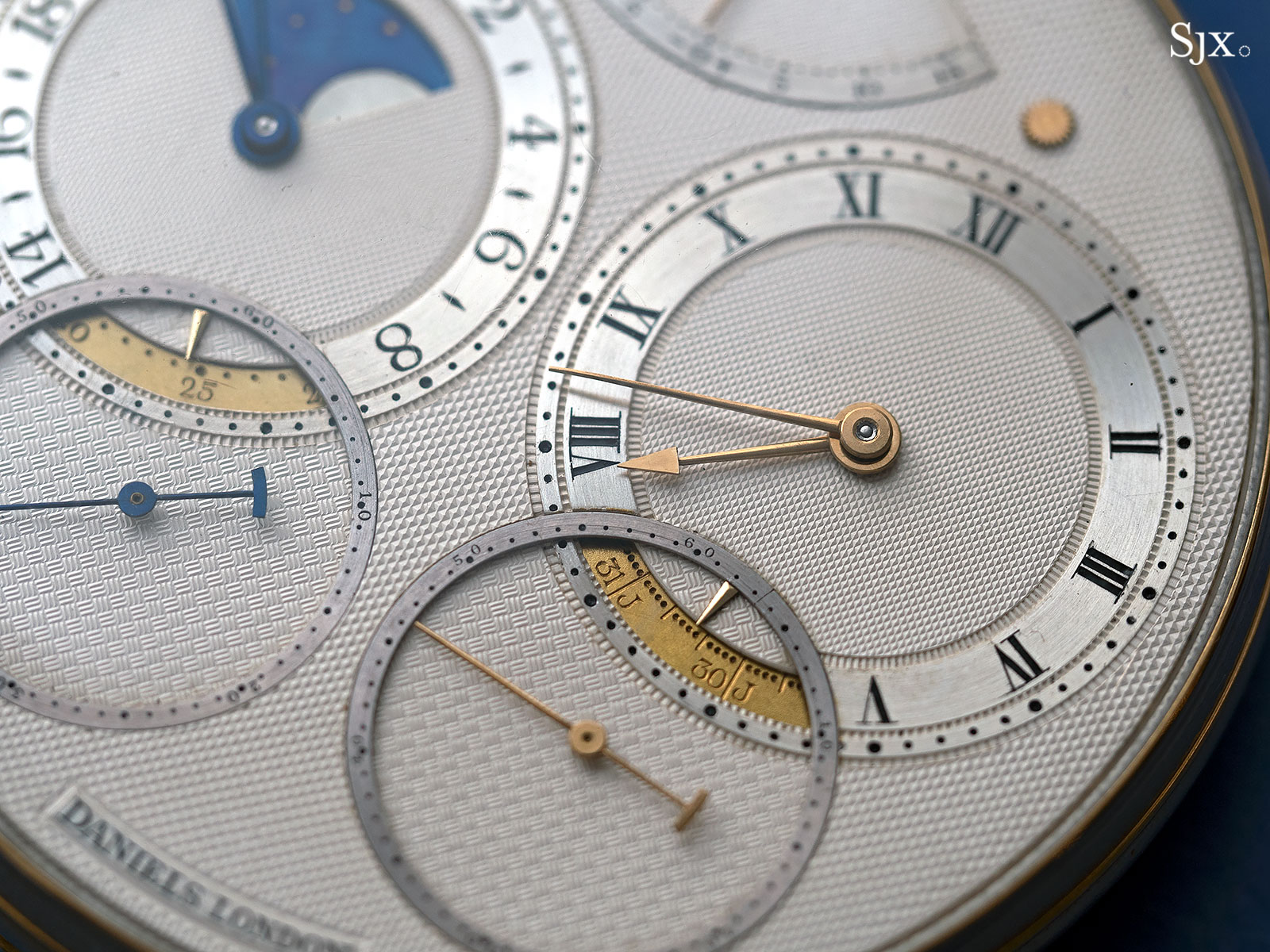
Executed with Roman numerals and gold hands, the right sub-dial displays mean solar time – hence the tiny gold Sun right above it – and the aperture on its lower edge is an annual calendar, showing the day of the month on a ring scaled for the full year. The calendar advances twice per day as the hands turn.
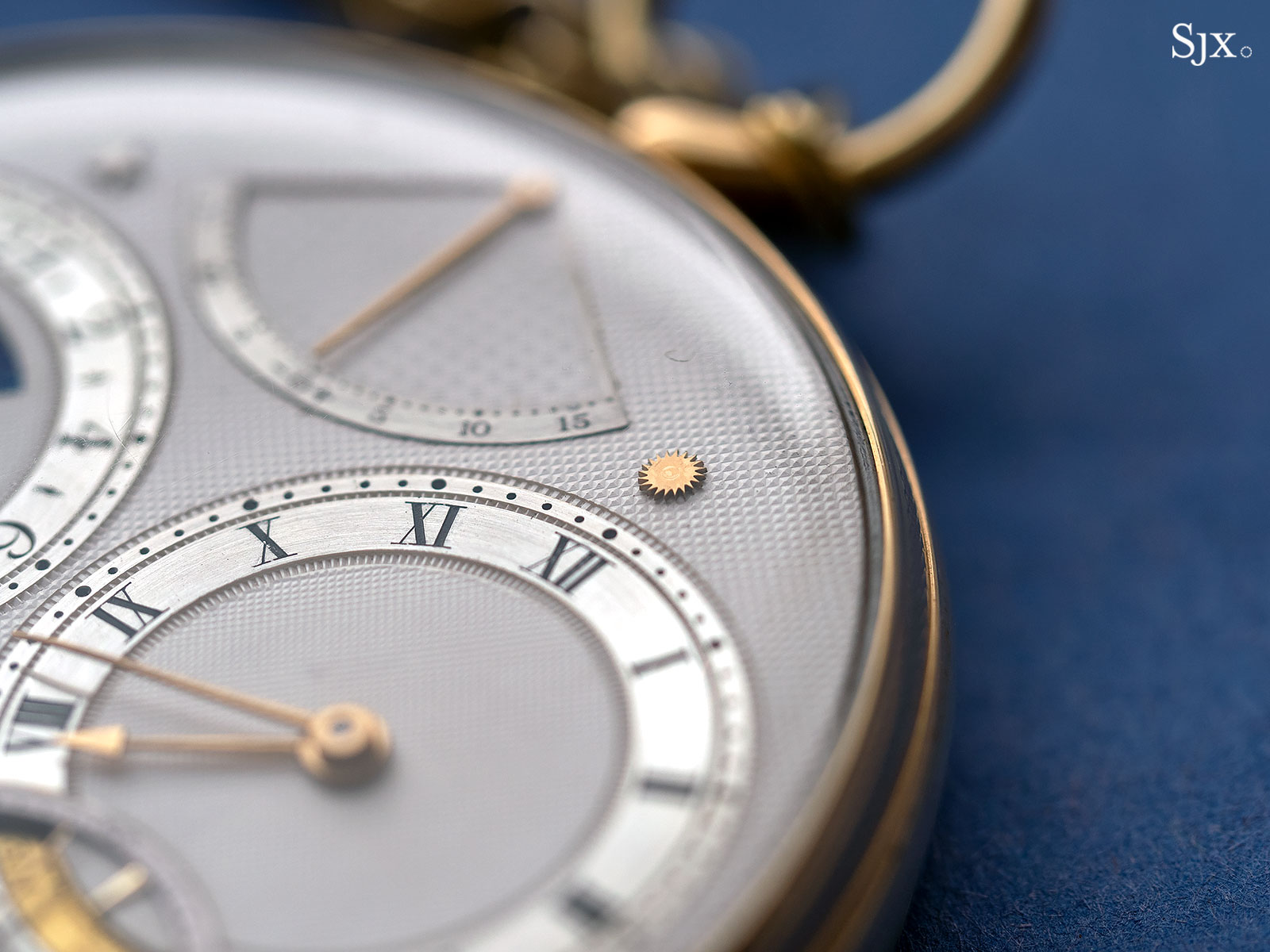
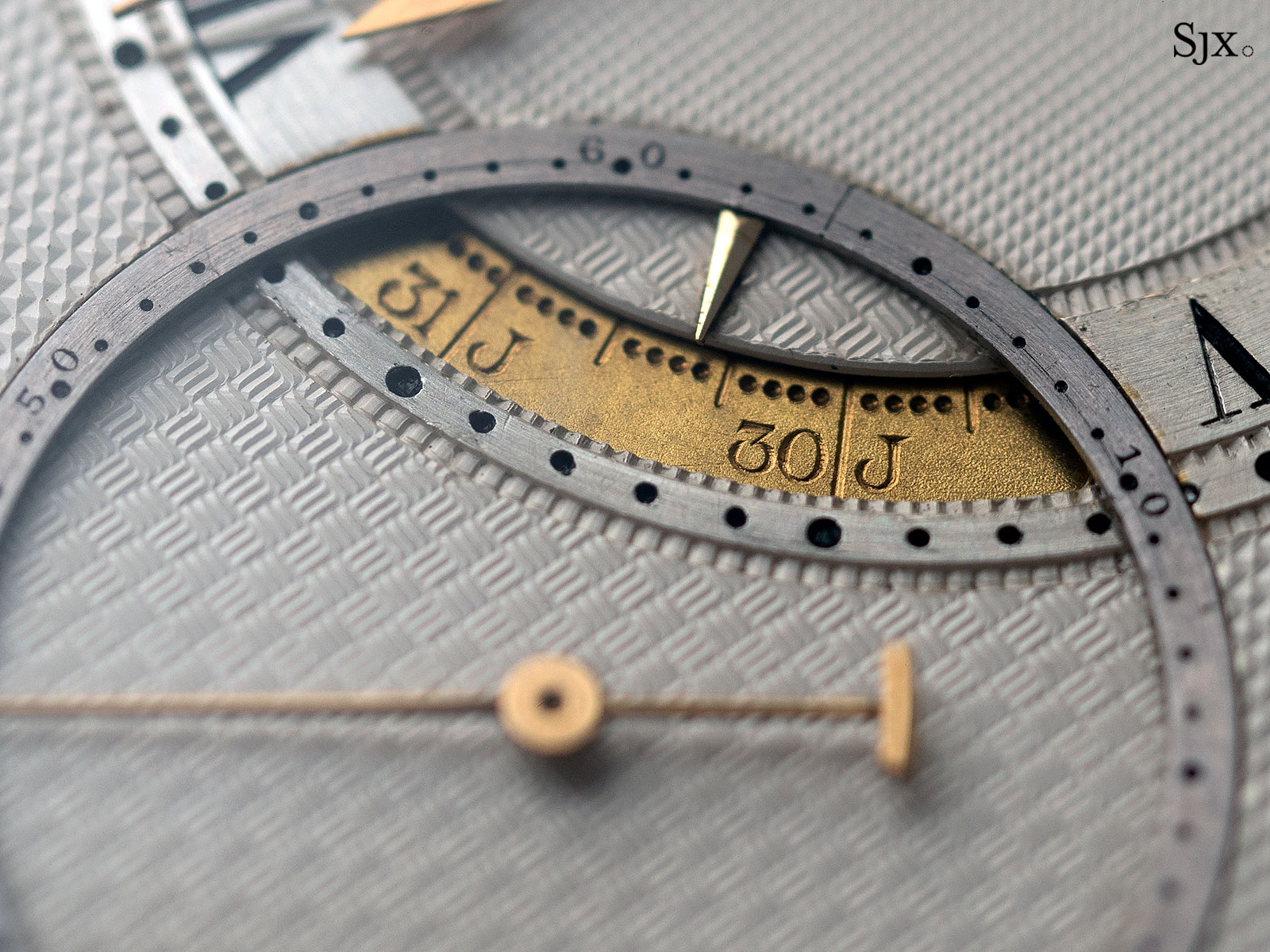
The annual calendar indicating approximately June 17
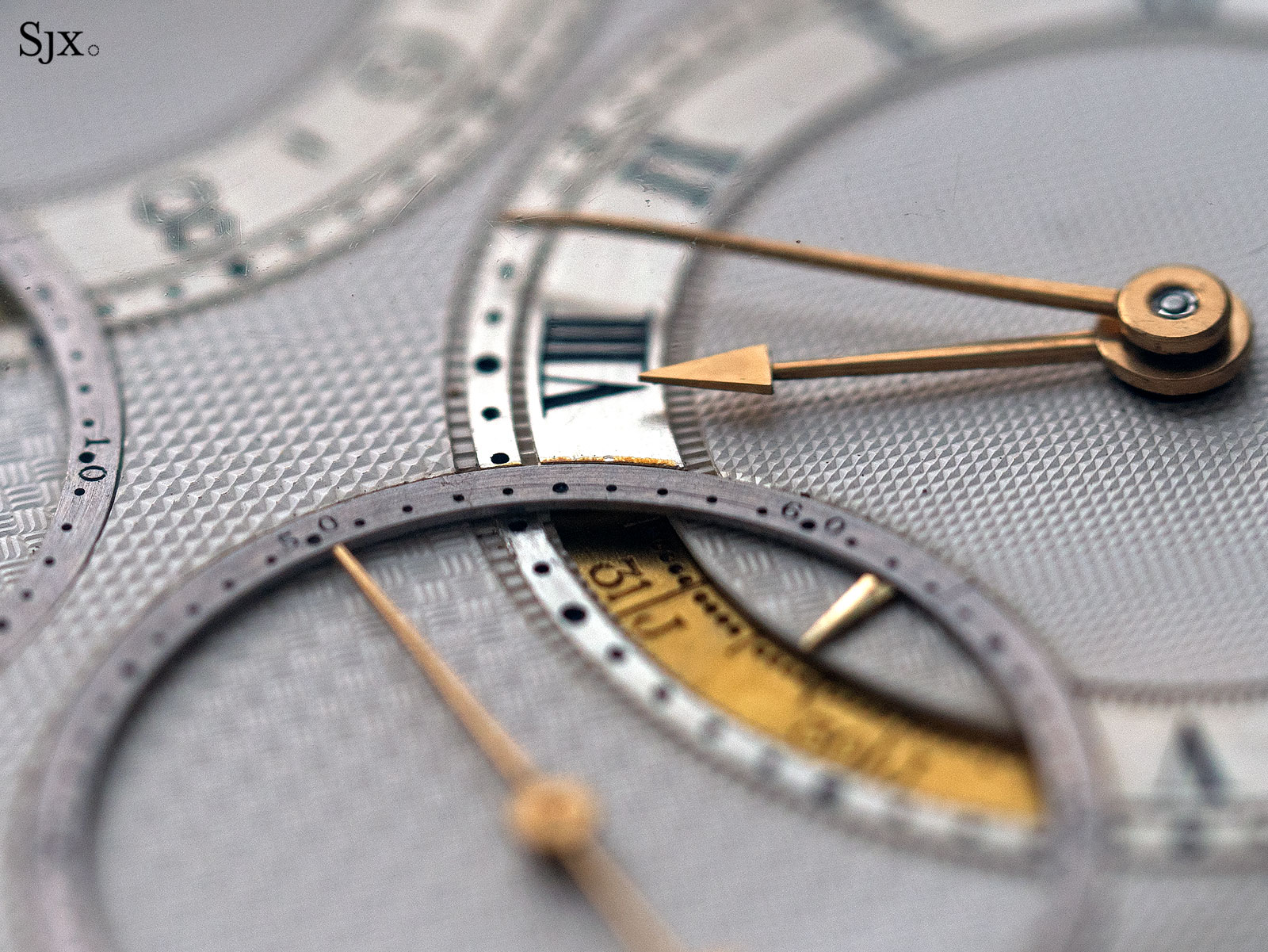
Denoted by a tiny silver star, the sub-dial on the left is for sidereal time, where a day is approximately 23 hours, 56 minutes, and 4 seconds. It is shown on a 24-hour dial with Arabic numerals matched with blued steel hands, easily setting apart the two time displays.
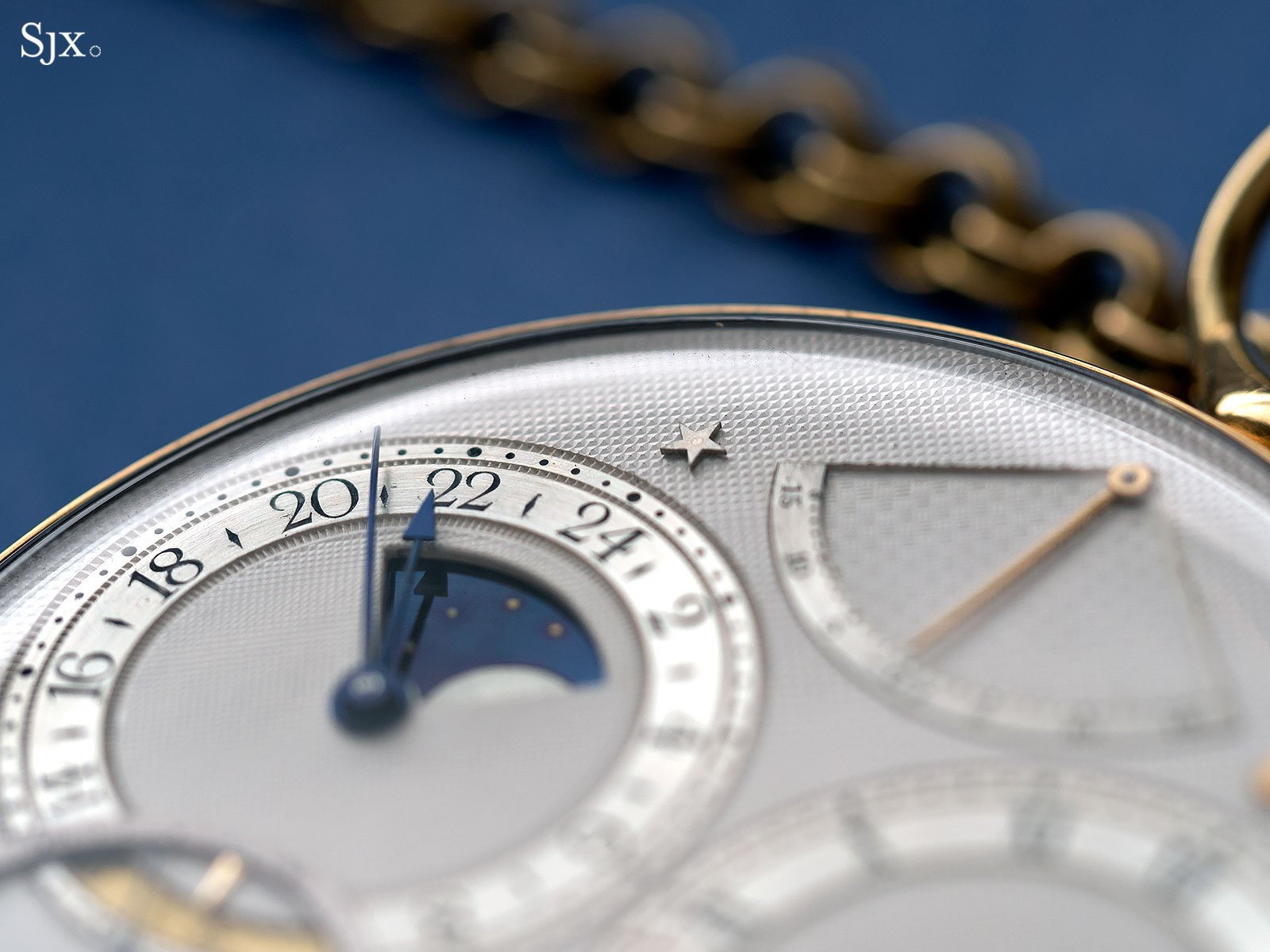
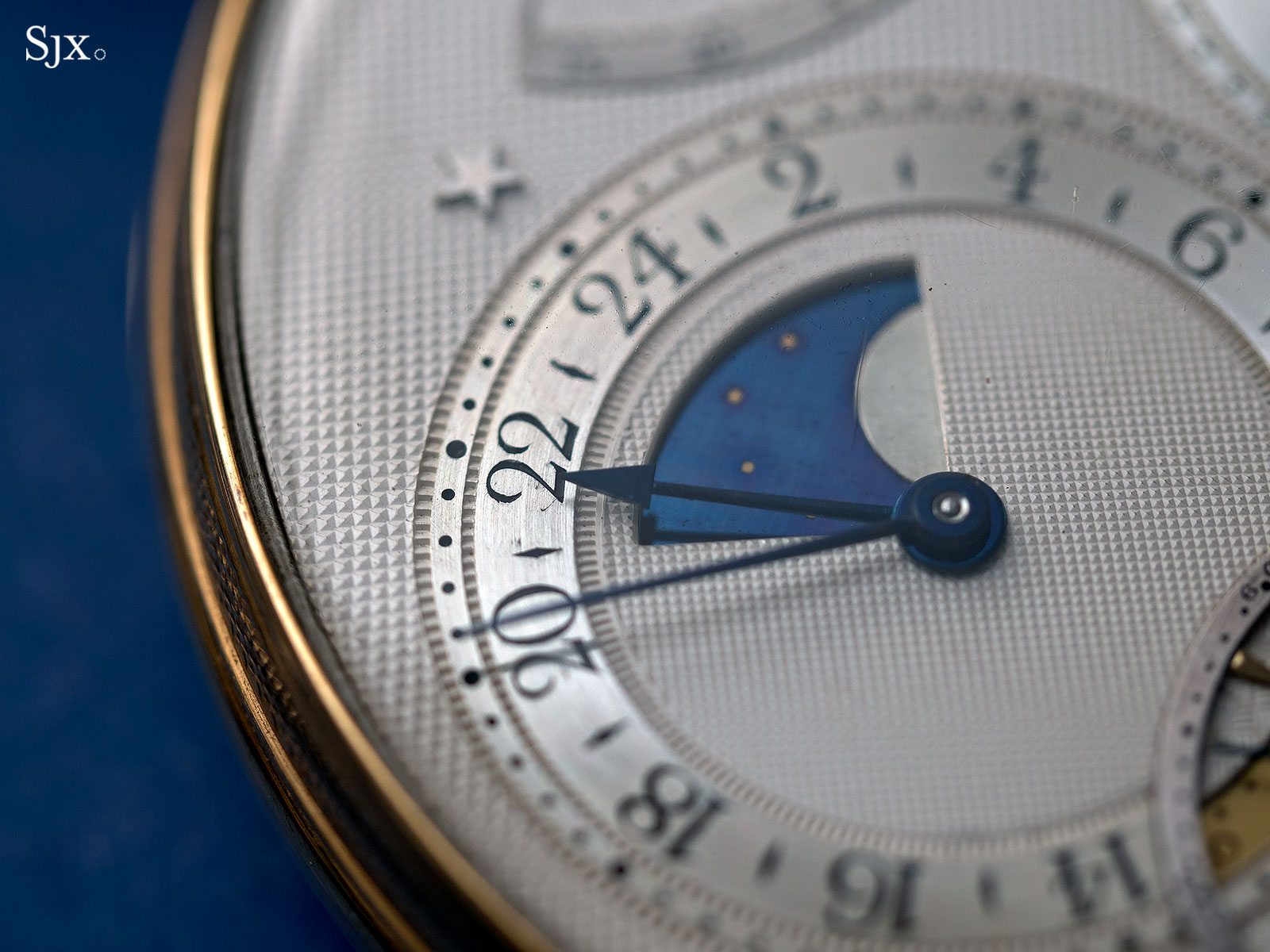
Incorporated into the sub-dial is a moon phase display, and on the lower edge of the sub-dial, the age of the moon indicator, or in other words, the day of the month. Like the calendar, the moon phase display advances twice per day.
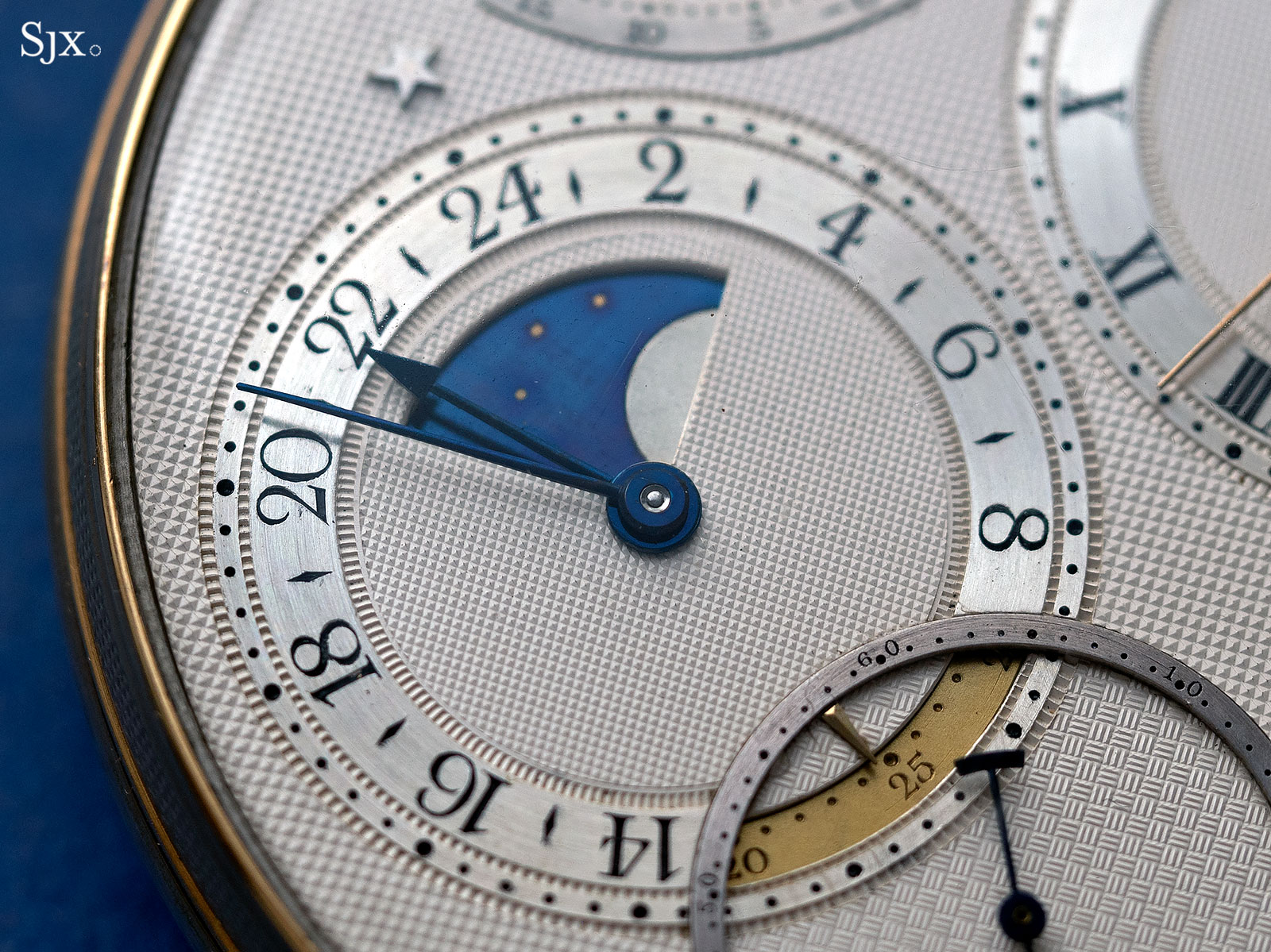
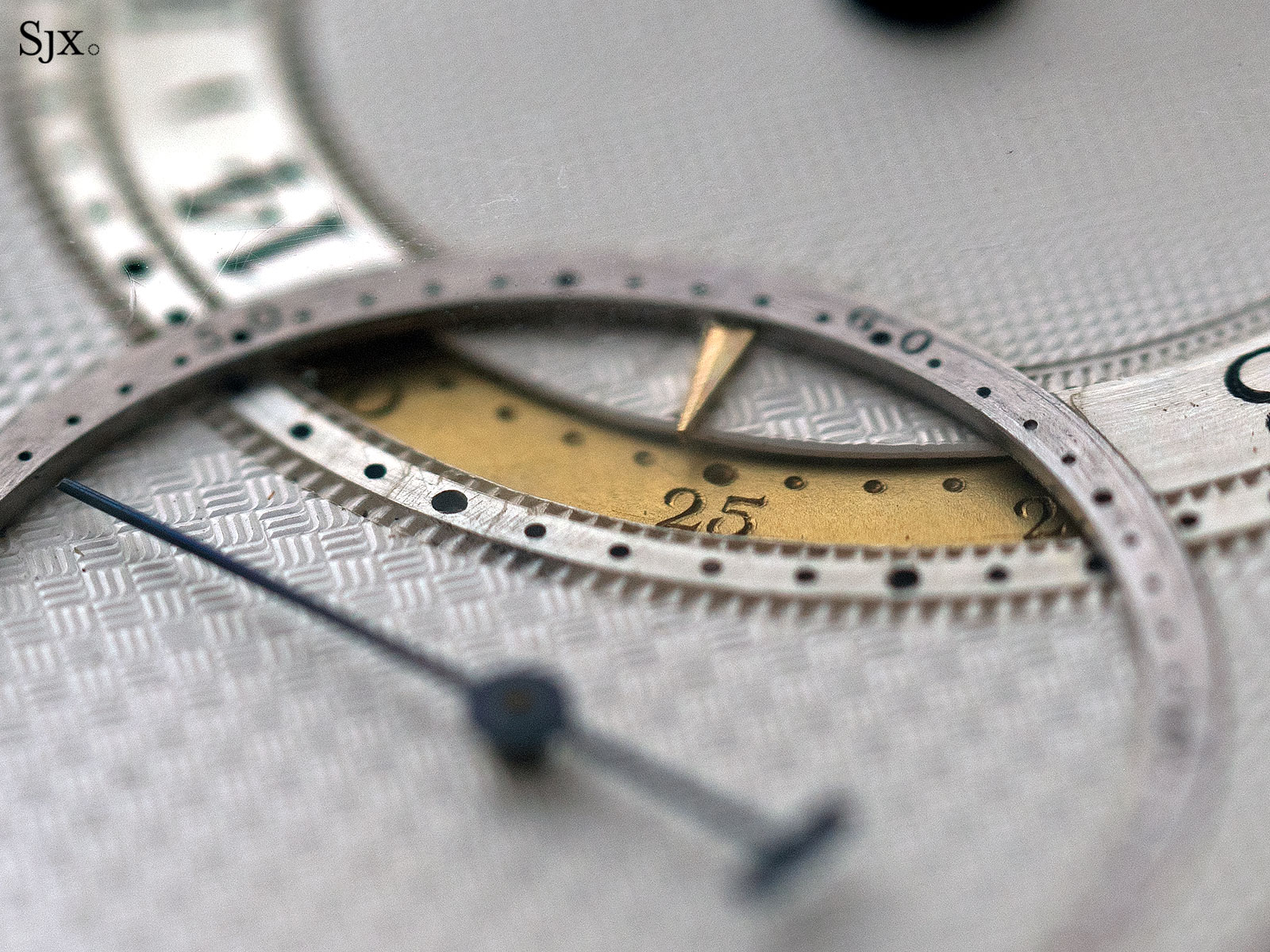
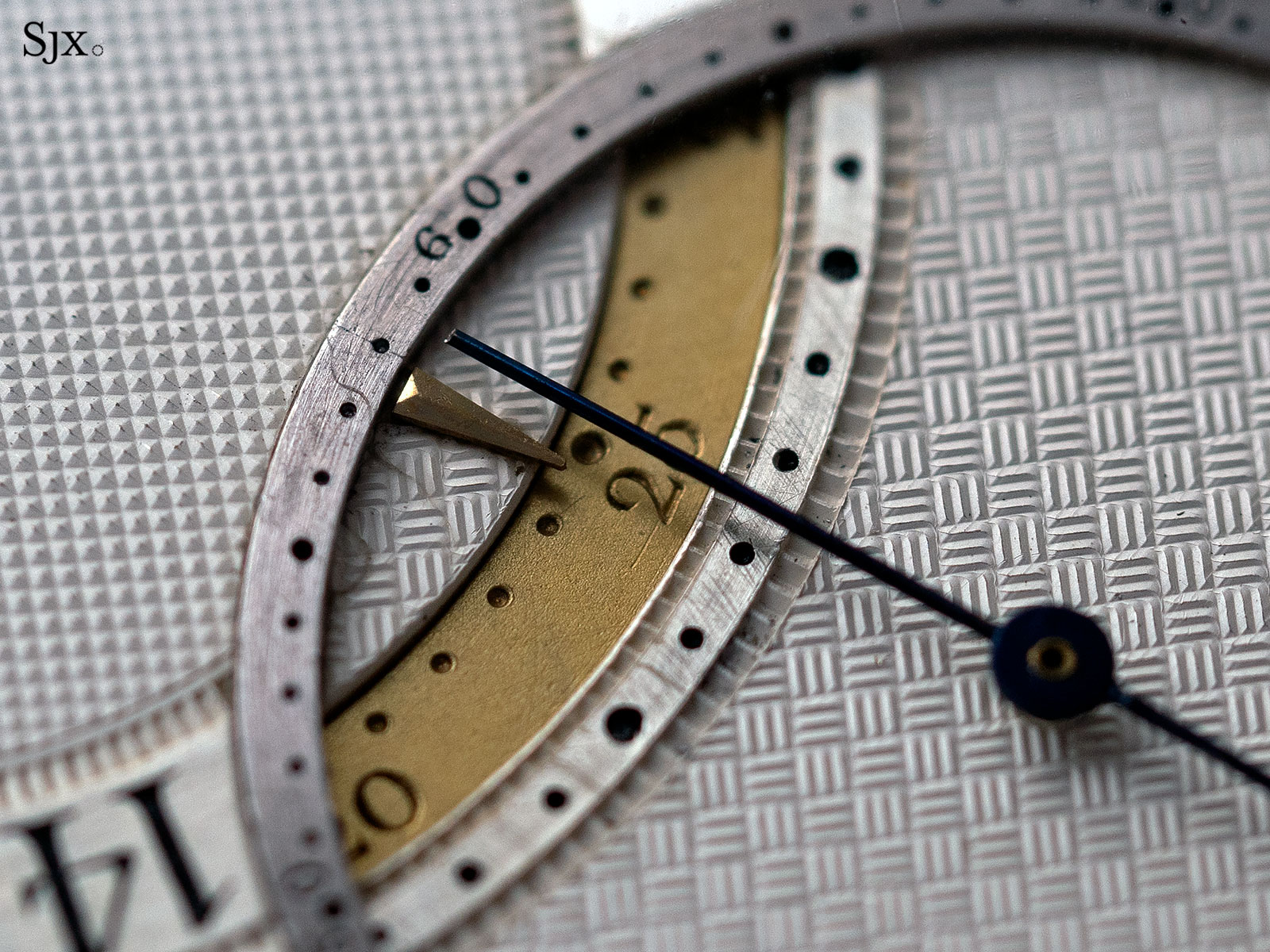
At 12 o’clock on a fan-shaped display is the equation of time, which is the difference between mean solar time and apparent solar time, which is time based on the orbit of the Earth around Sun.
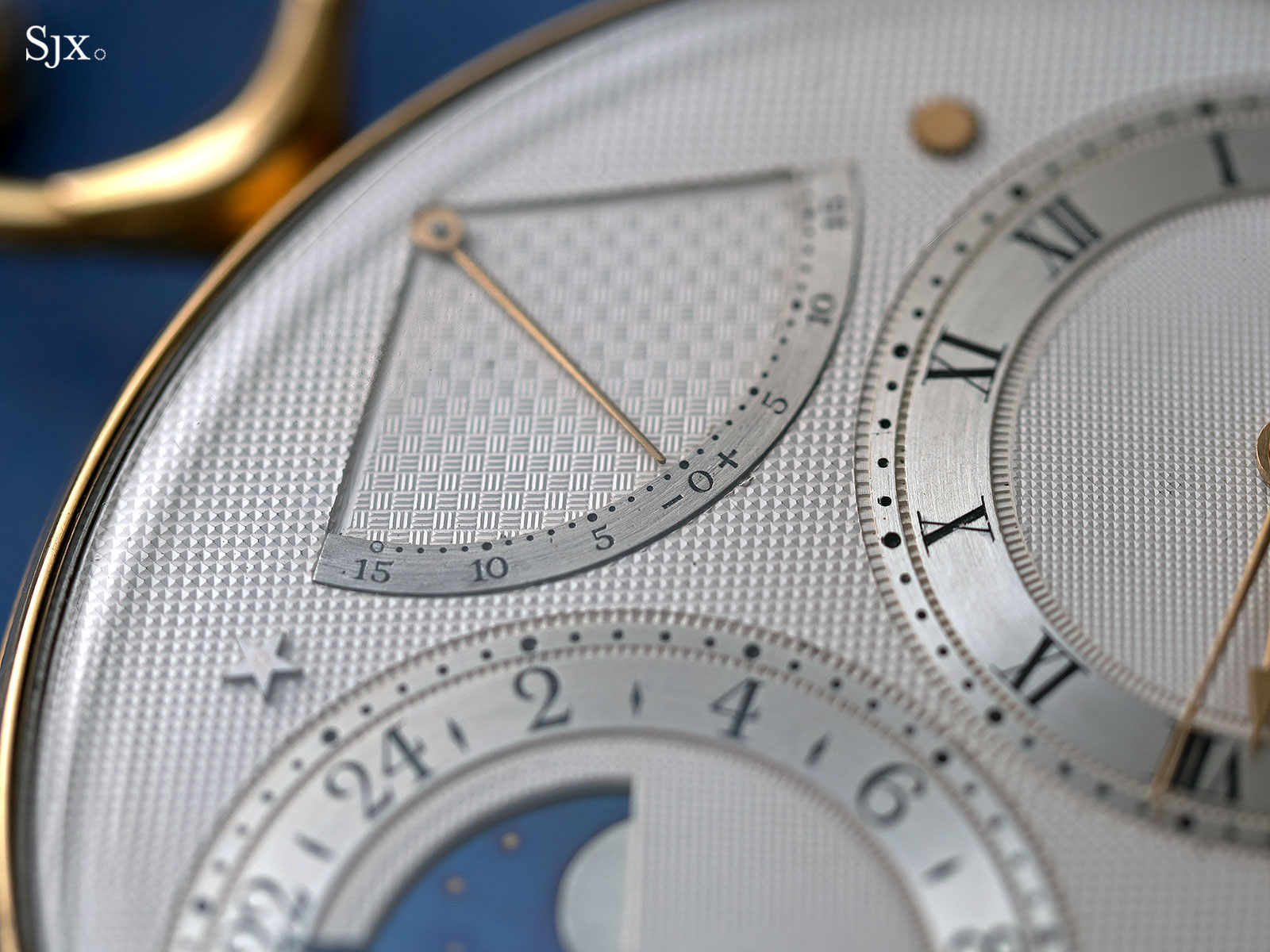
The movement mirrors the dial in its symmetry and sensibility. Twin barrels sit at the top of the movement, with each wheel train flowing downwards to its own escape wheel, which meet under the large balance wheel.
A key made of blued steel and gold – attached to the watch by an appropriately intricate gold chain – accomplishes both winding and setting. The wide end of the key inserts into the large socket and wind both barrels simultaneously, while the narrow end is used for setting the individual indicators.
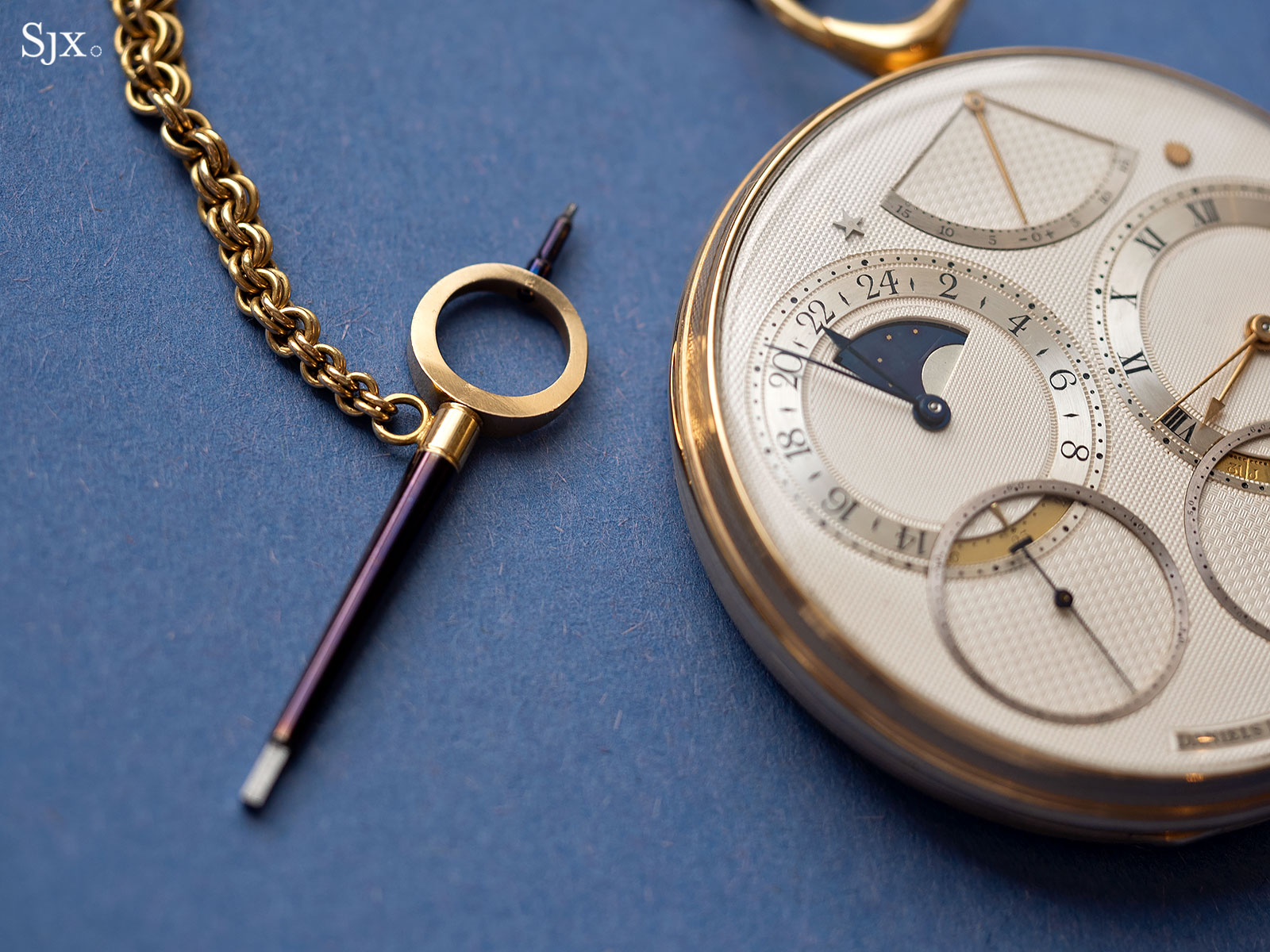
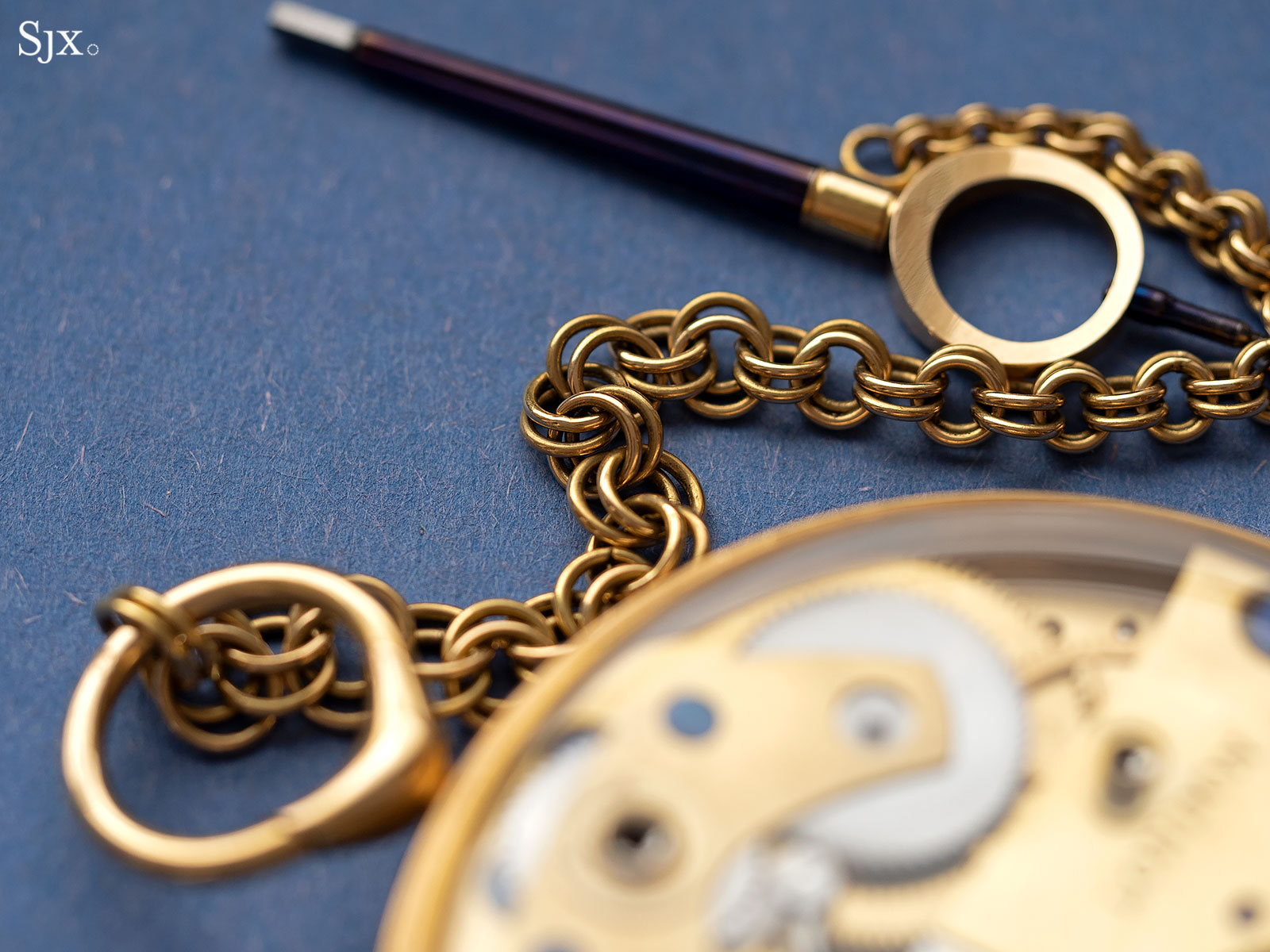
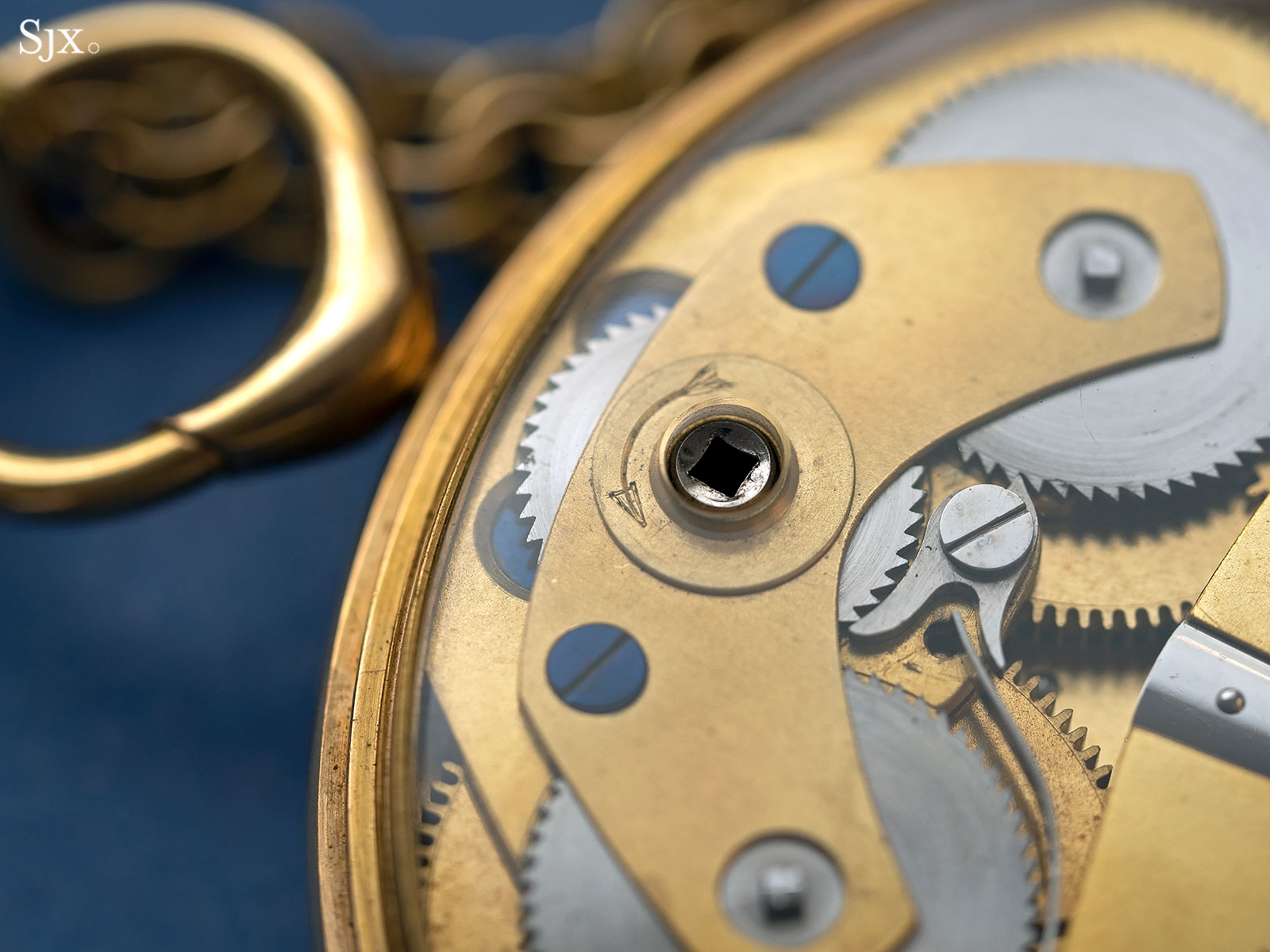
Winding is done counter-clockwise as indicated by the arrow
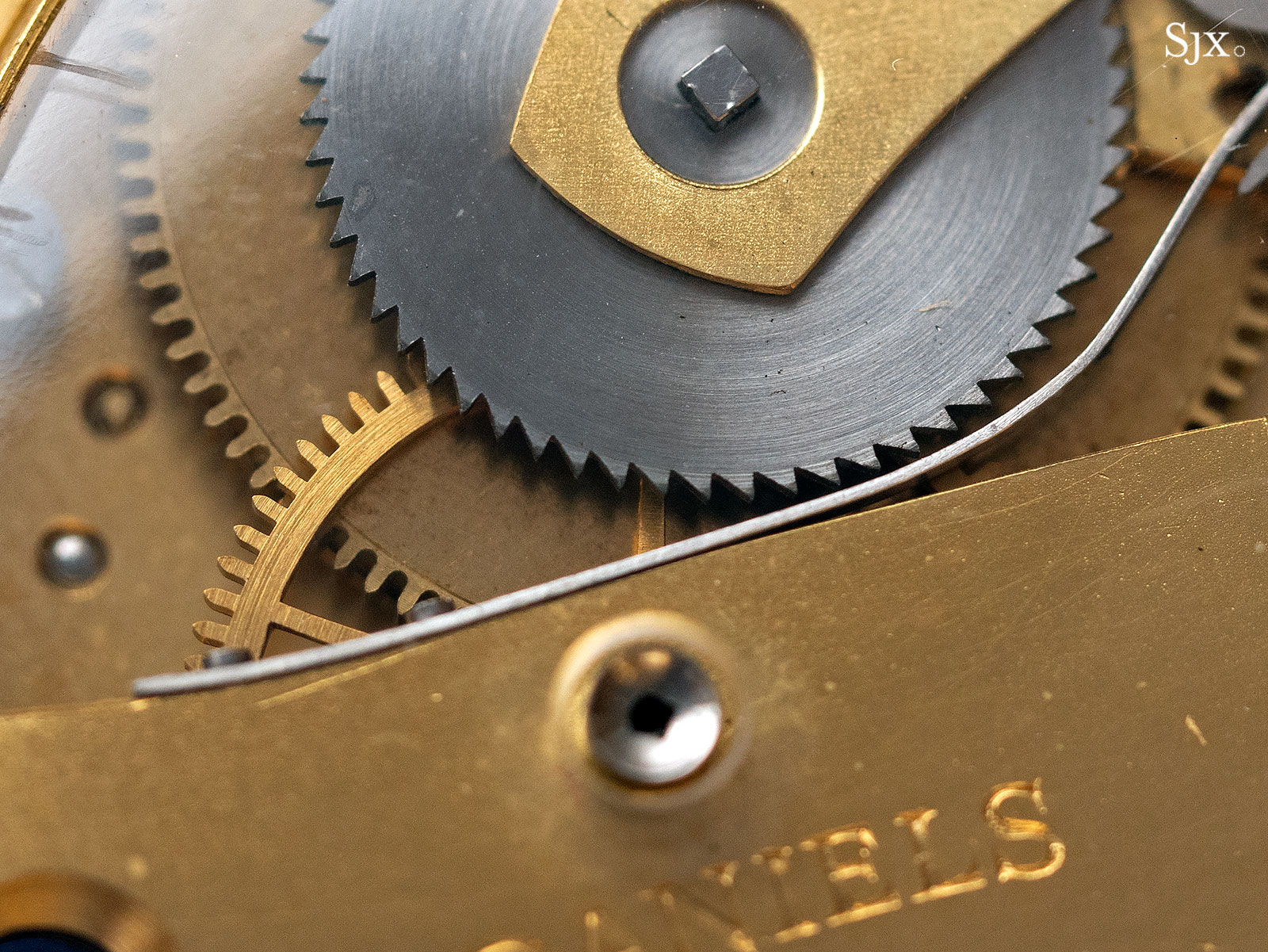
Mean solar time is set via the socket above “Daniels” on the going train bridge, while the sidereal time socket is on the opposite end of the bridge, engraved “London”.
And just below each end of the train bridge are two additional, smaller sockets for the calendar and moon phase respectively, both of which can only be set clockwise.
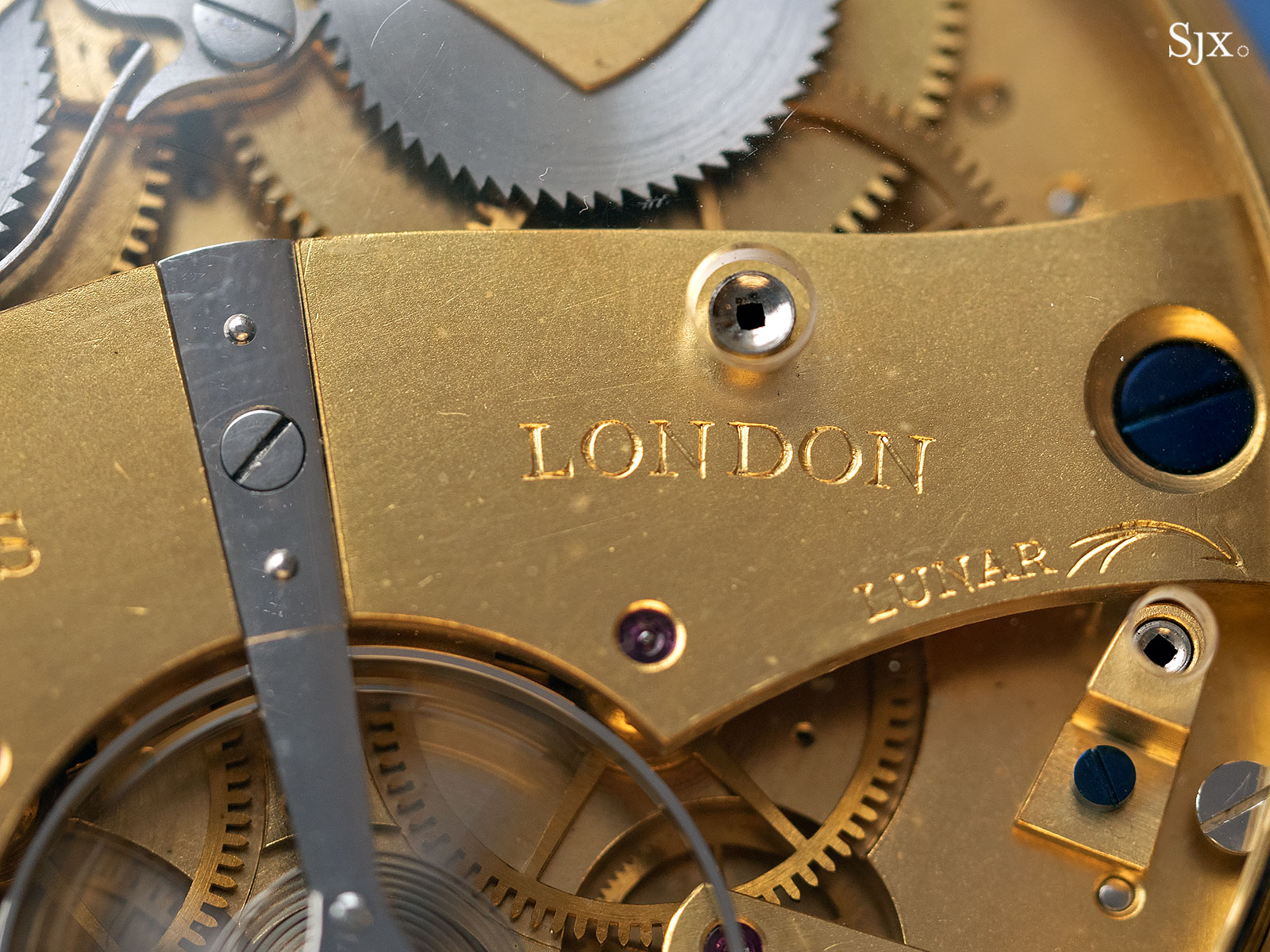
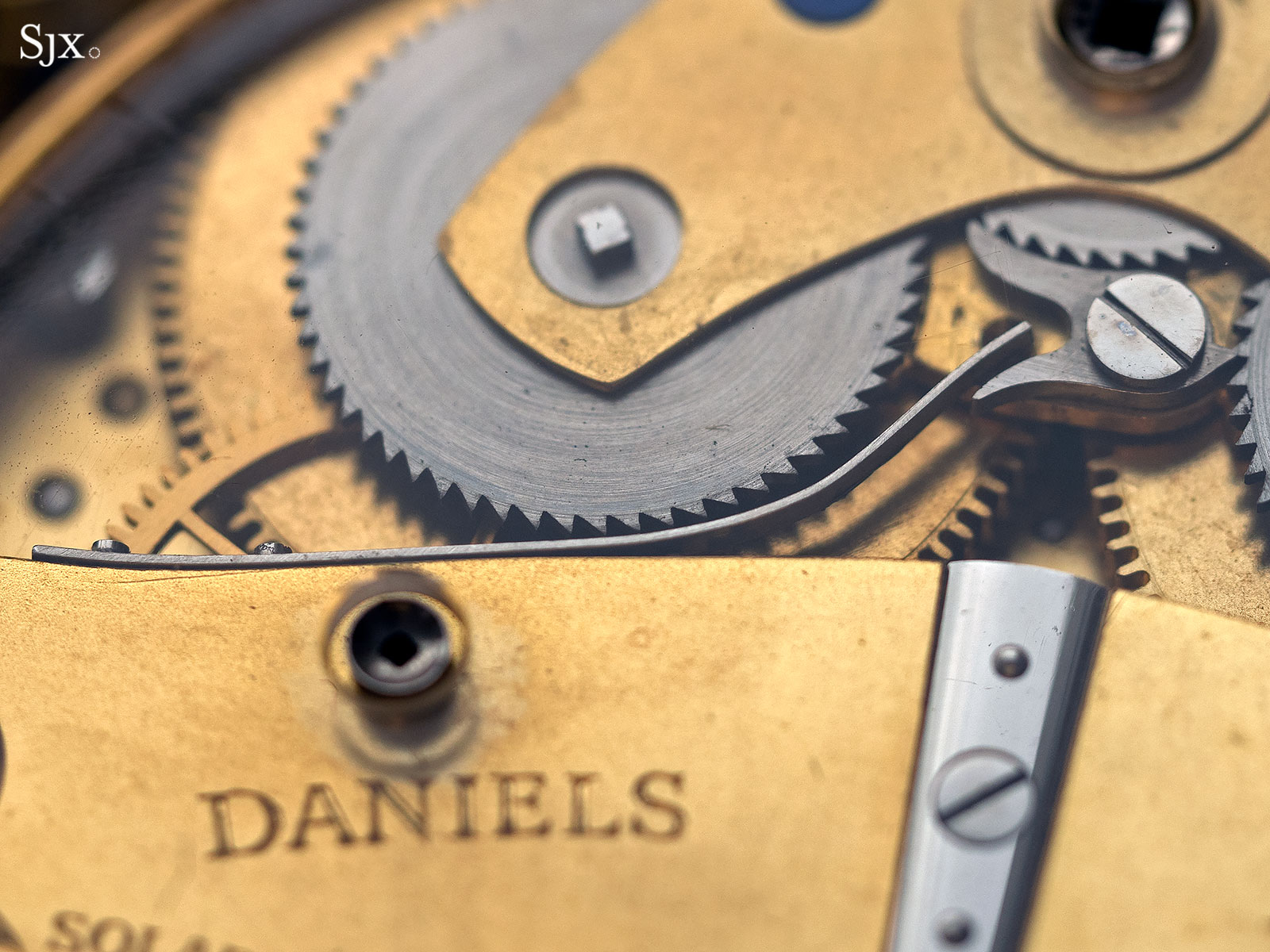
If there is one shortcoming in the Space Traveller I, it is the mechanical and visual similarity between it and the preceding five watches with the independent double-wheel escapement. Though unique, the first Space Traveller does have some close relations.
I vs II
With the second watch now safely residing in the United Kingdom, and unlikely to reemerge in public for a lifetime, it is no longer possible to compare the two Space Travellers. But the differences between the two are well known, thanks to Daniels’ own archive and commentary over the years by his successor Mr Smith.
One crucial complication separates the two watches – the Space Traveller II has Daniels’ “compact chronograph”, while the first version does not. That is obvious through the single display back of the second Space Traveller; notably, the Space Traveller I has a display back under a hinged hunter back.
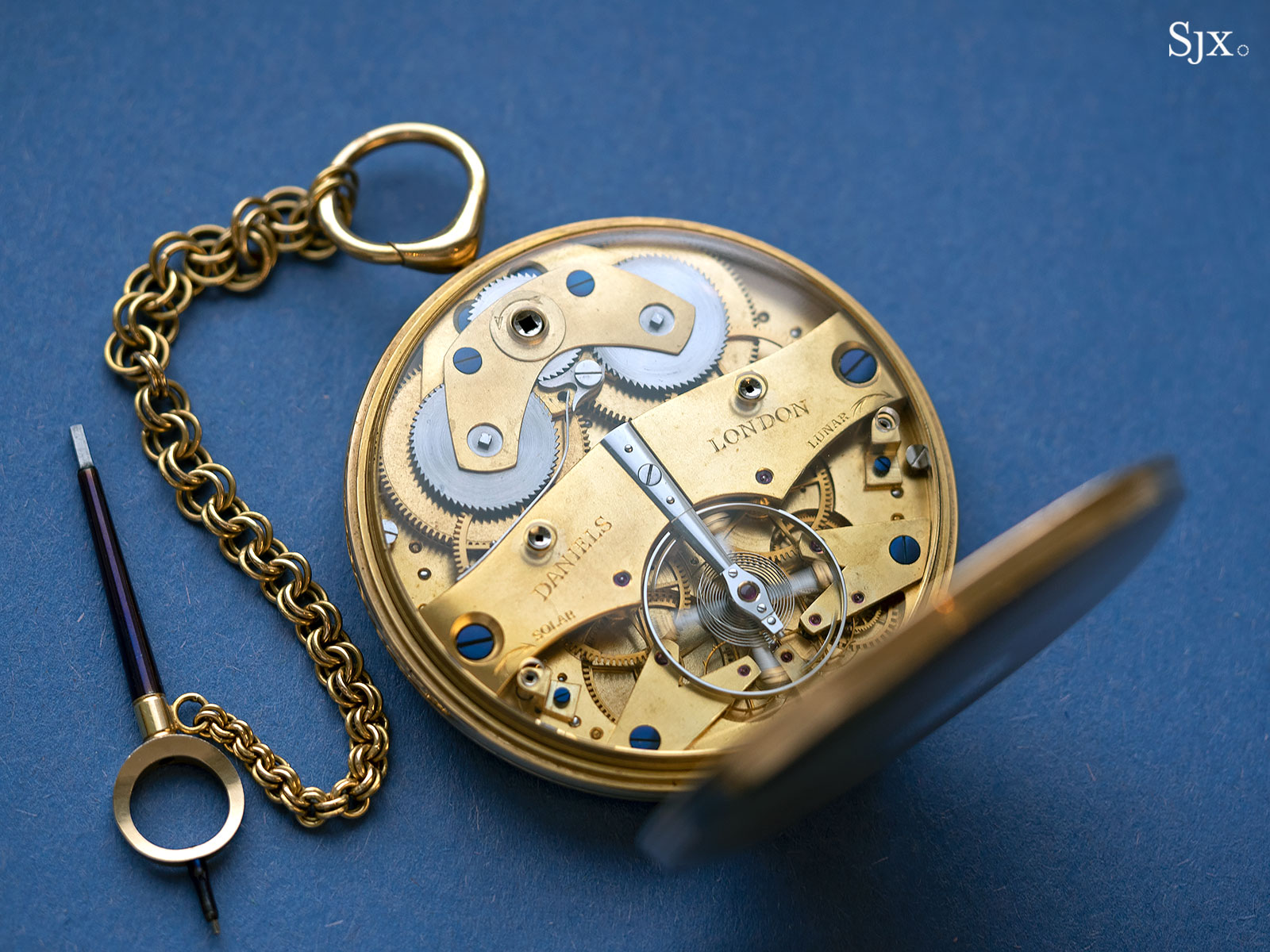
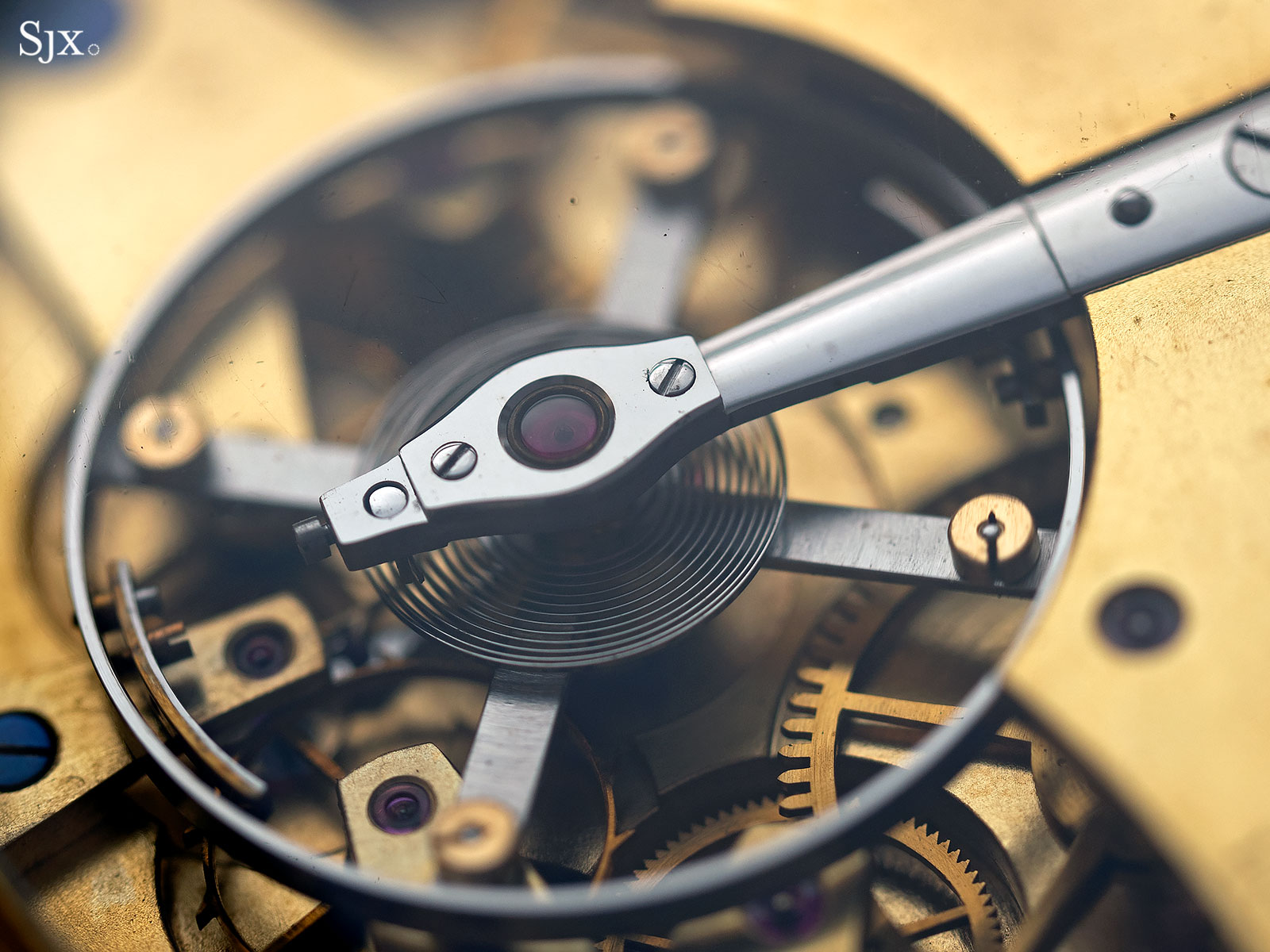
More intriguingly, the chronograph can be switched between the two trains, meaning it can record either elapsed mean solar time, or elapsed sidereal time, thanks to a clutch visible in the centre of the movement.
Invented by Daniels and premiered in the second Space Traveller, the compact chronograph was later built into two other watches, including a wristwatch that also featured a tourbillon.
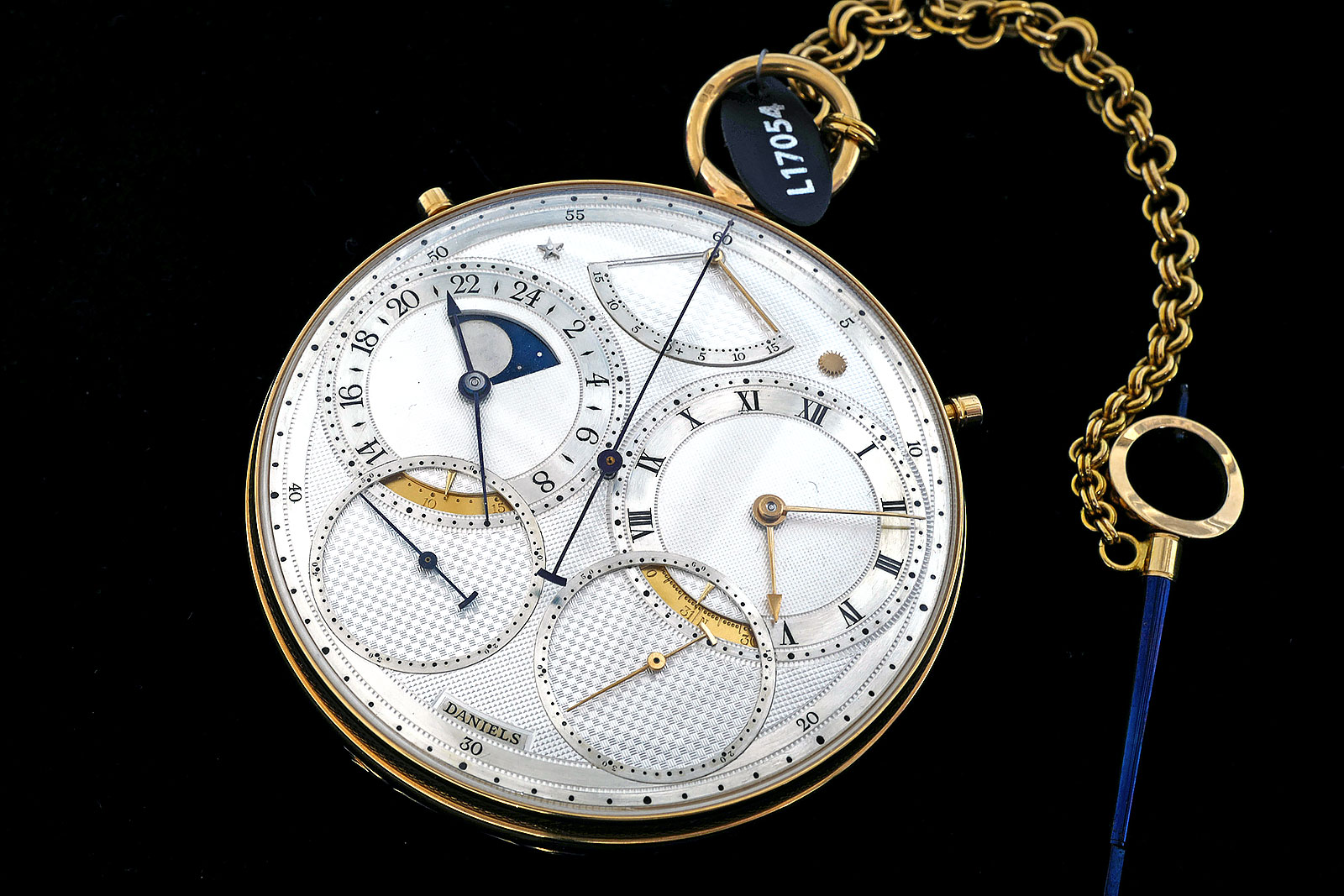
The Space Traveller II
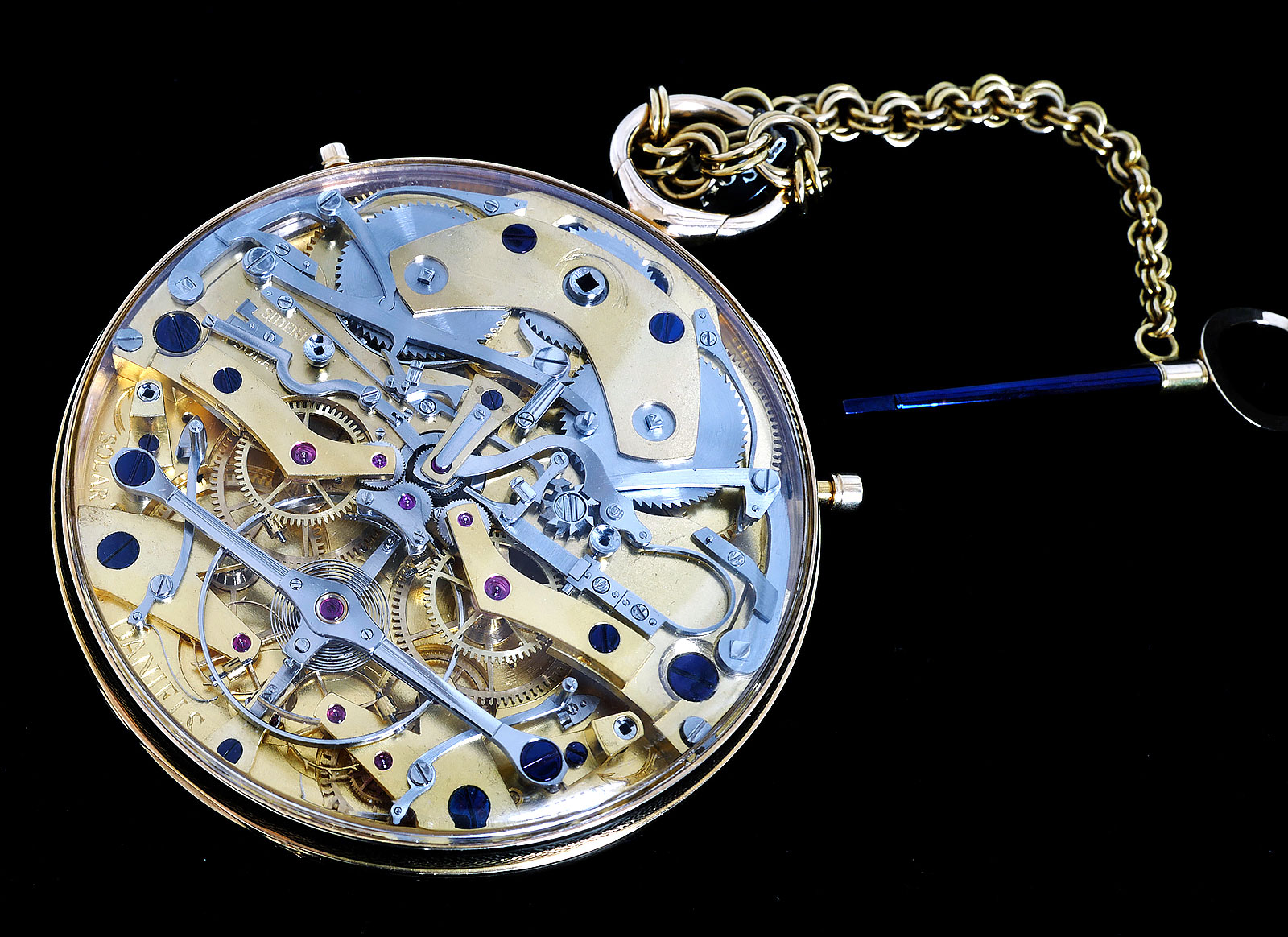
The second Space Traveller from the back
So named because it was designed to occupy minimal space, the compact chronograph was constructed on top of the movement.
Compared to the first Space Traveller, the second has a narrower and thinner going train bridge, so as to accommodate the chronograph mechanism. It also meant the repositioning of the balance cock, which is vertical in the first but becomes a horizontal bridge in the second.
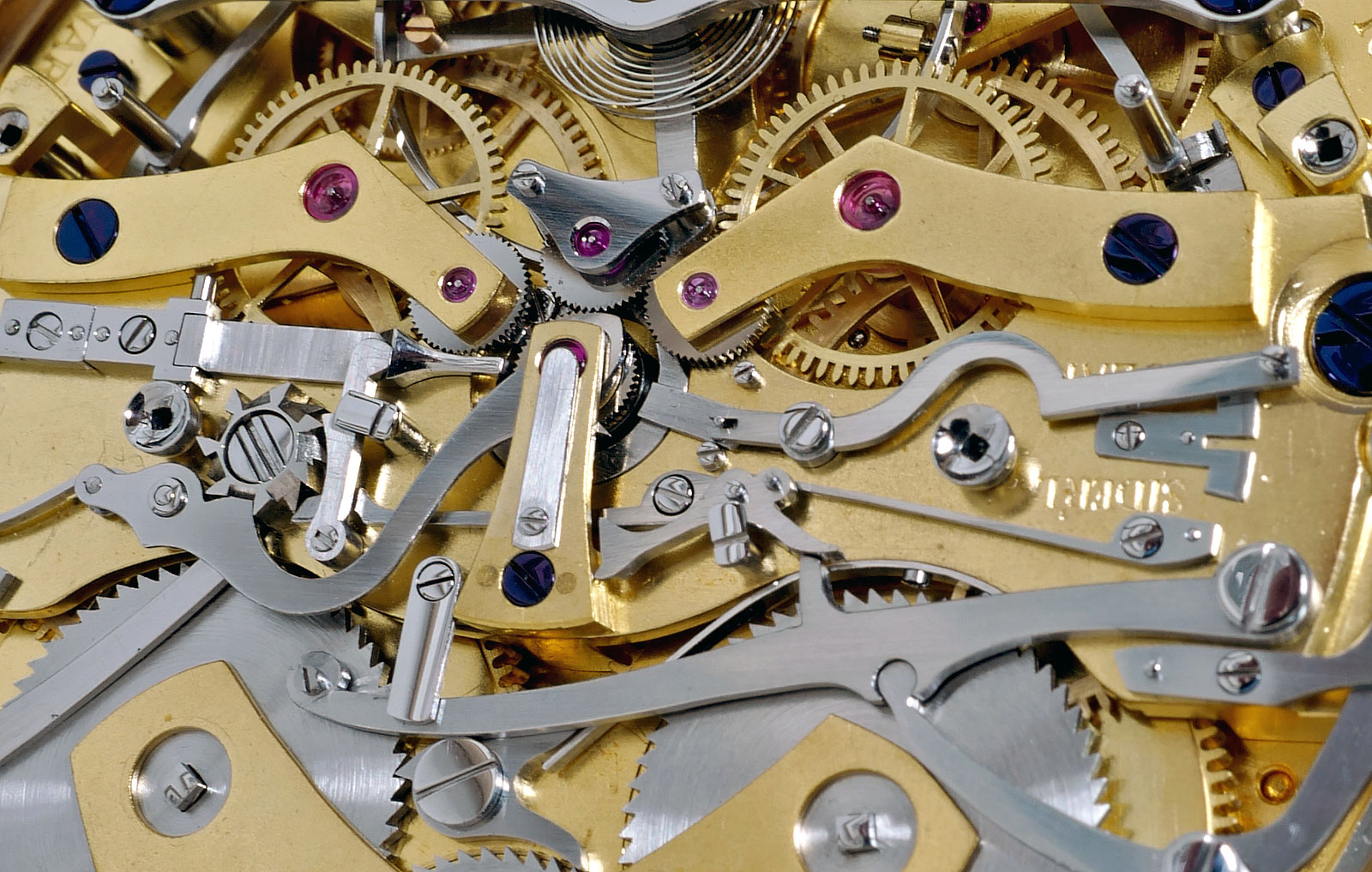
The compact chronograph mechanism
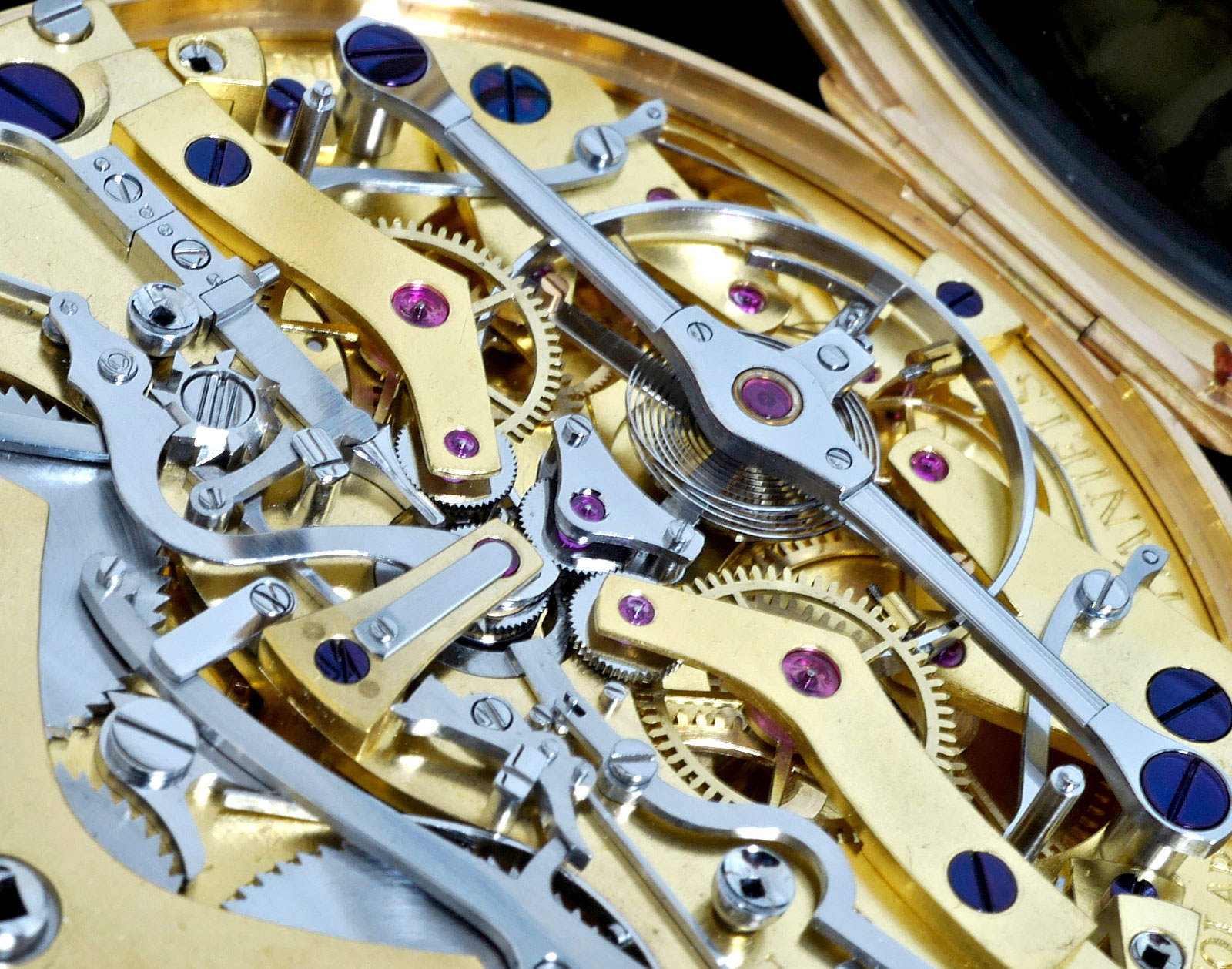
The horizontal balance cock with the chronograph works just adjacent to it
Despite those changes, along with several other smaller tweaks, the two movements are share the same basic construction, with the key components remaining in the same position on both base plates.
Concluding thoughts
The Space Traveller I is unquestionably an important and valuable timepiece, but is it more valuable than the second Space Traveller?
While the Space Traveller II is more complex and mechanically compelling, the first version has a functional elegance that embodies the lineage from Breguet to Daniels.
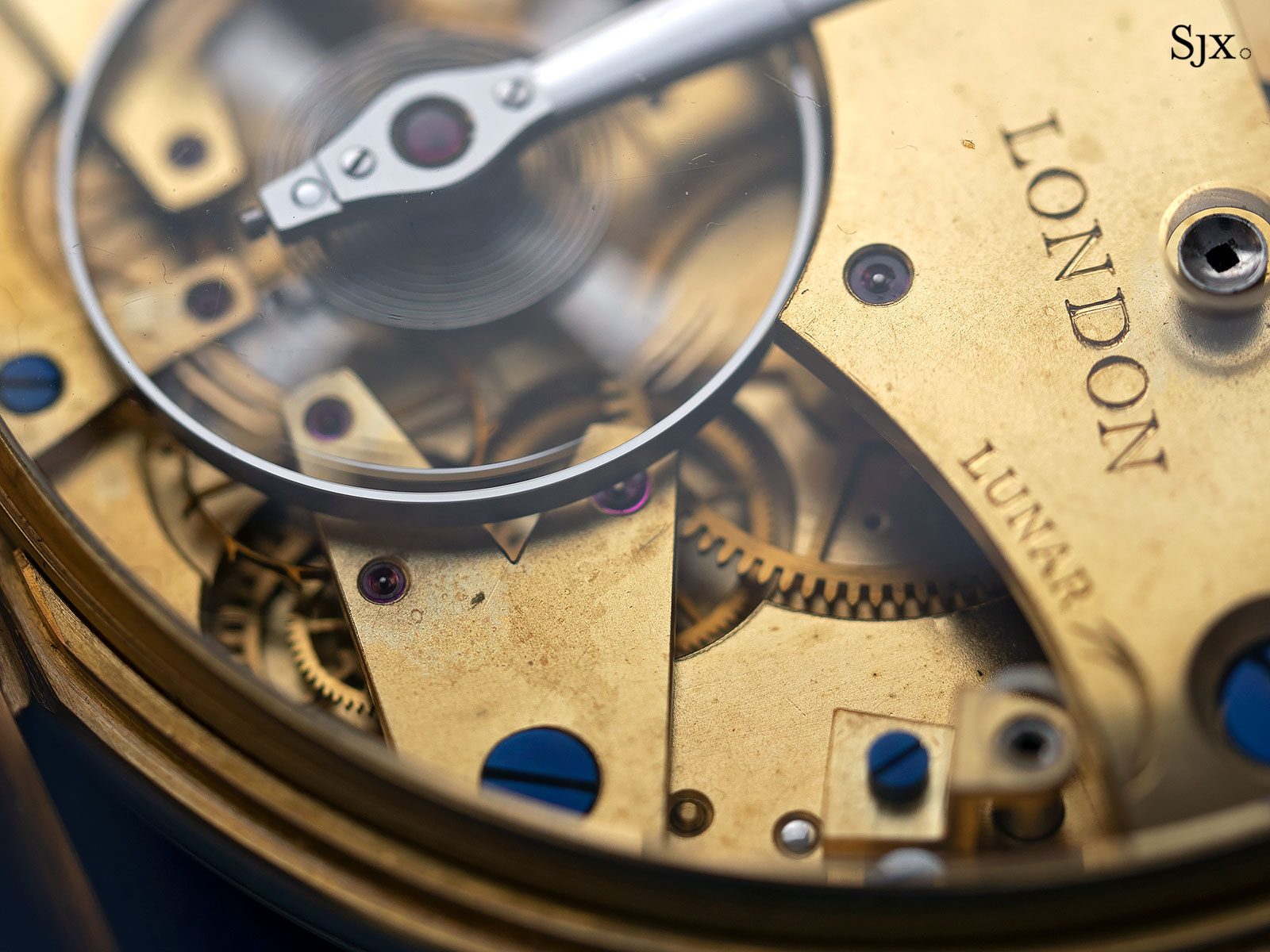
The Space Traveller I was also the first one built, which is usually matters as watches go, hence the value of an earlier Royal Oak A-series versus one with a serial number over 1000.
That, combined with the overall rise in values of Daniels watches since his passing, as well as the heavy hitters reputedly interested in the watch, will likely see the Space Traveller I sell for as much, if not more, than the second version.
Update June 11, 2019: Added technical diagrams of the movement provided by Sotheby’s.
Back to top.
